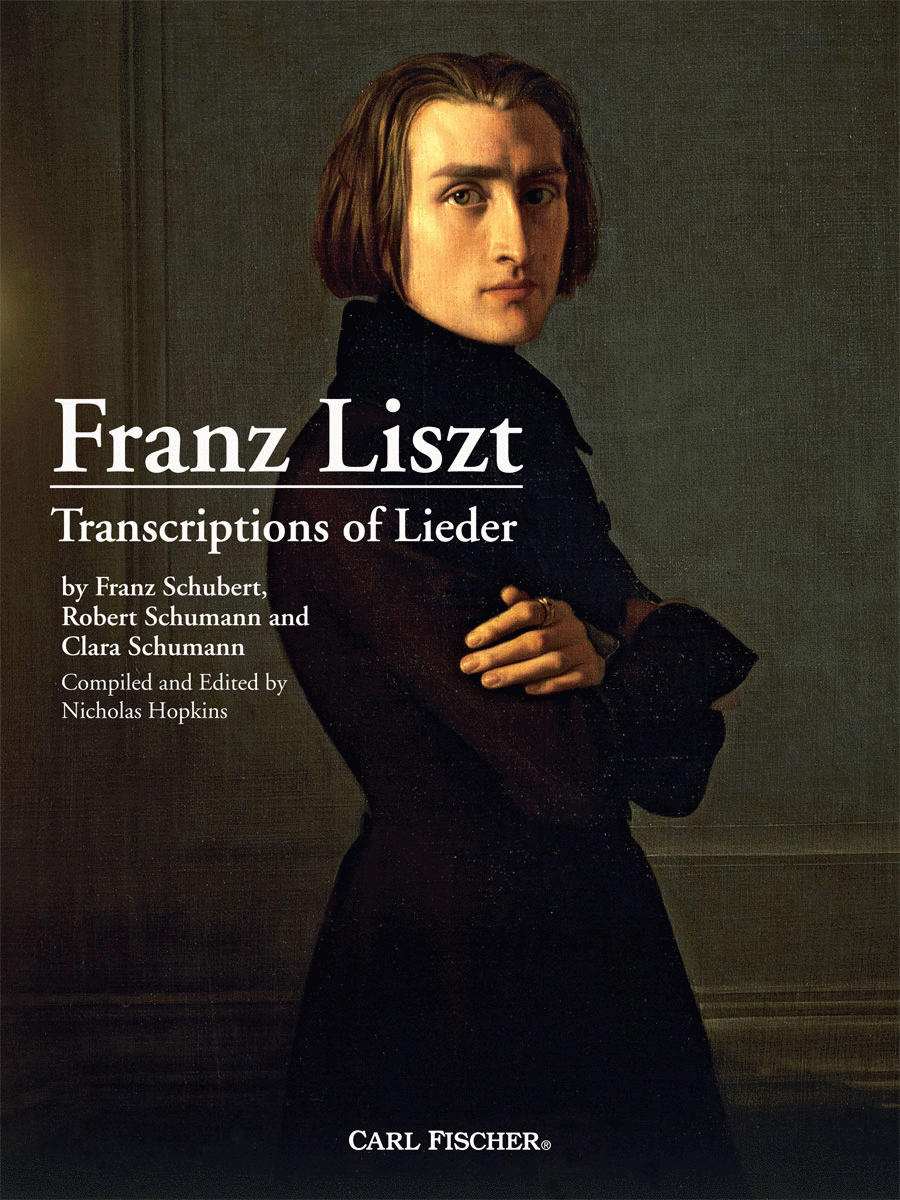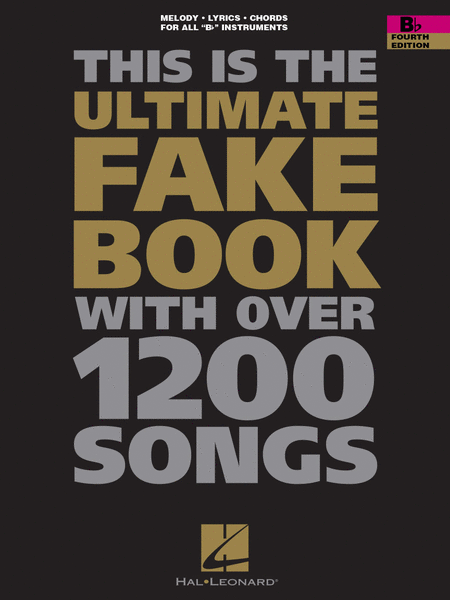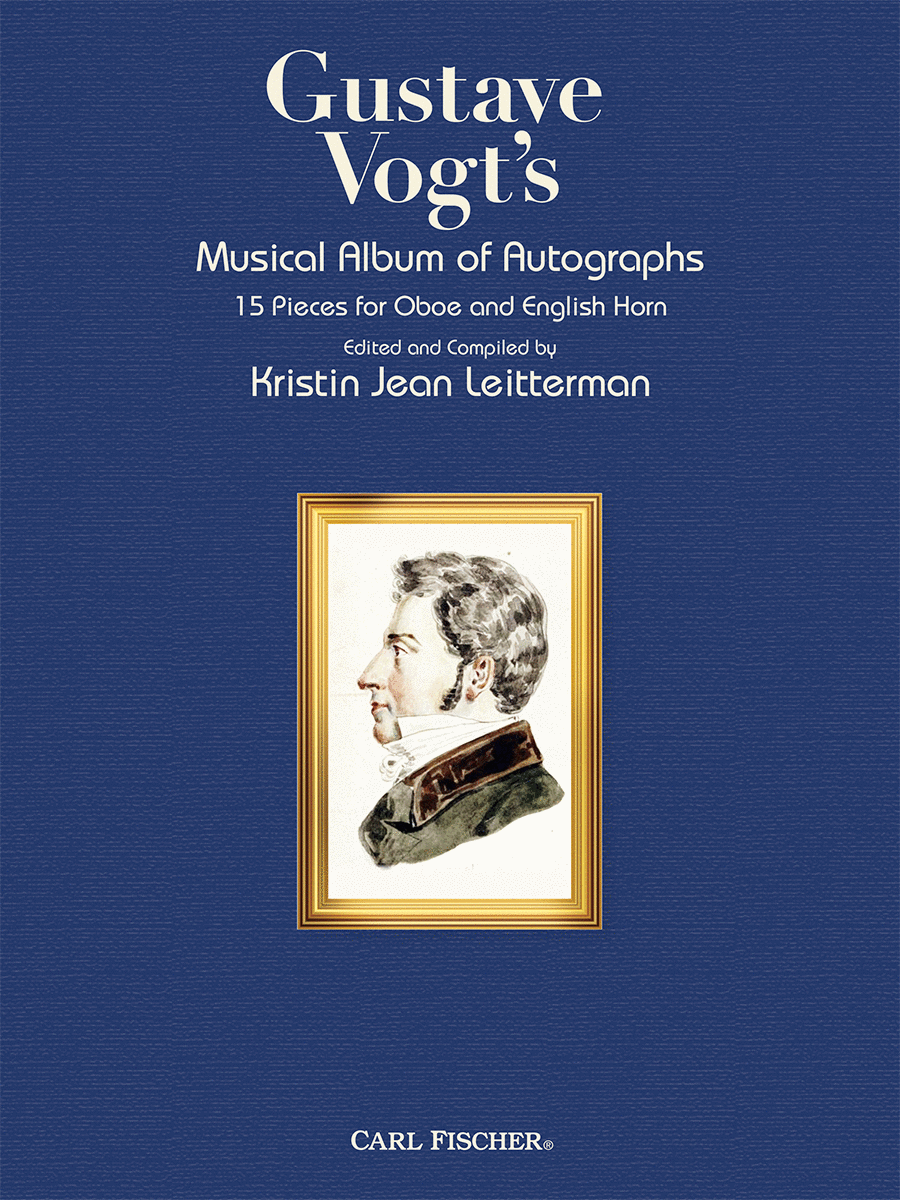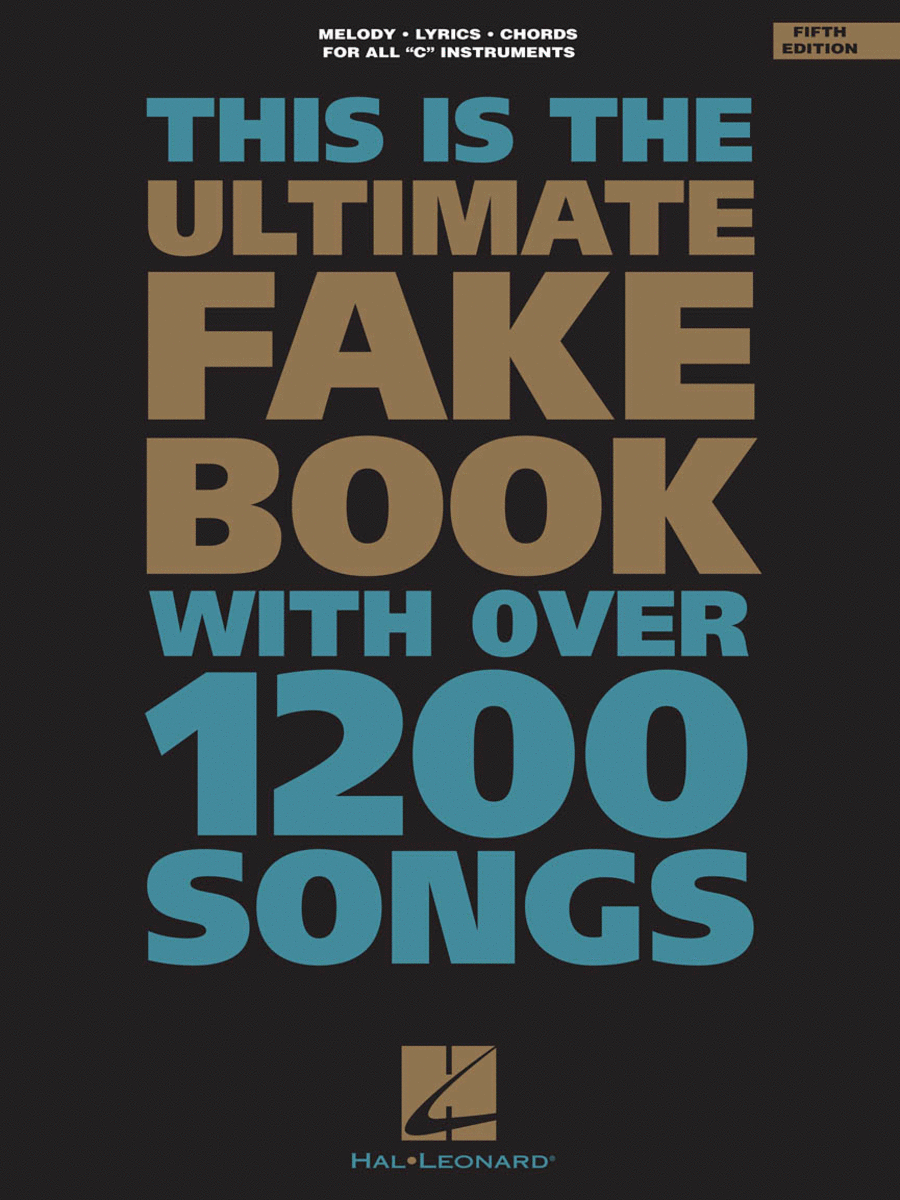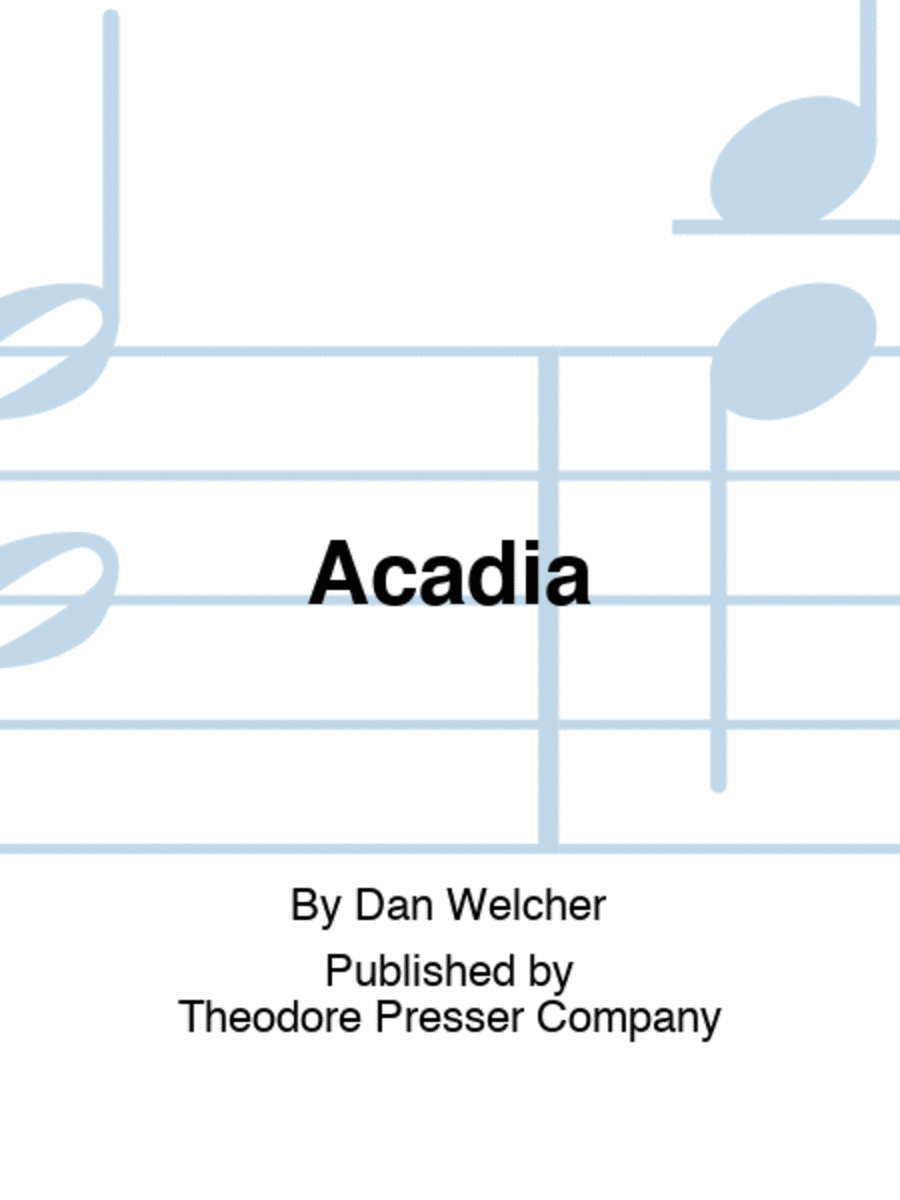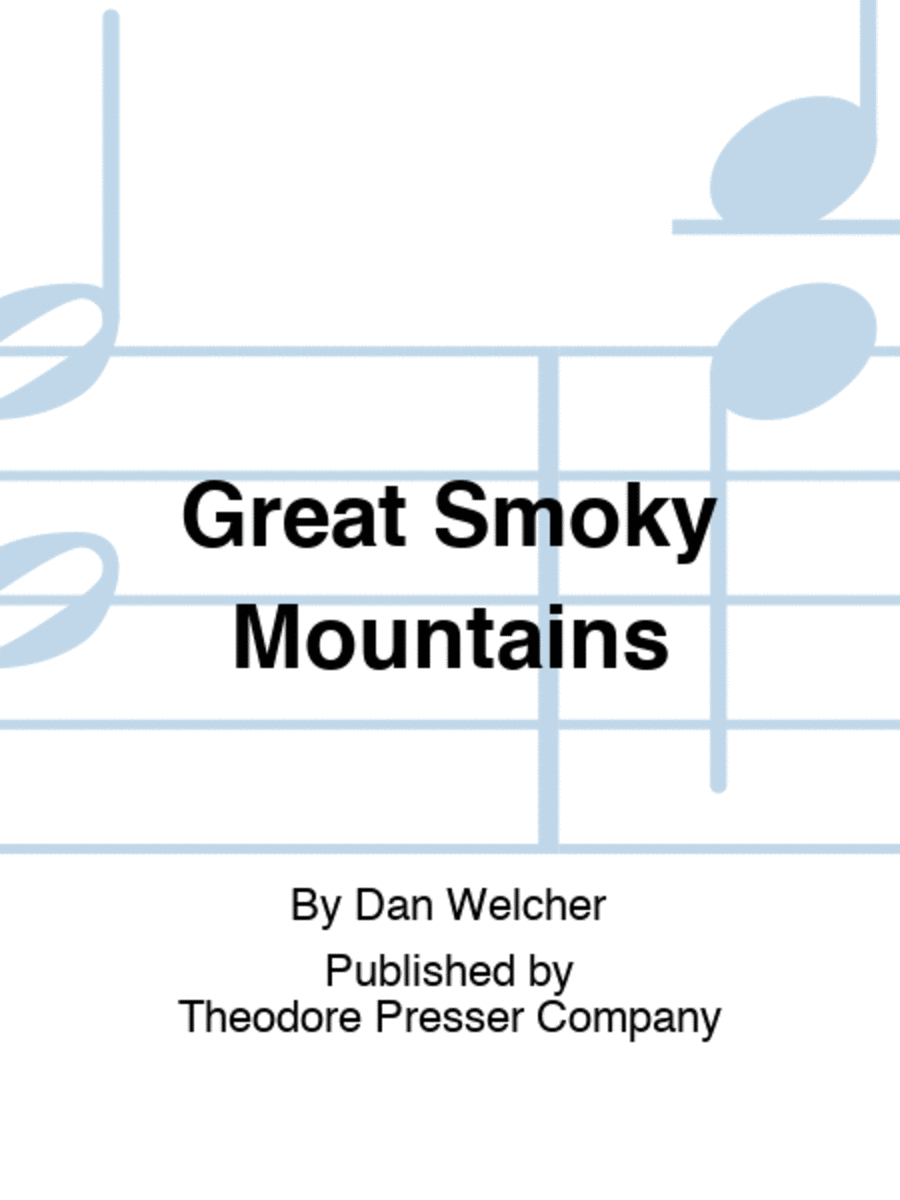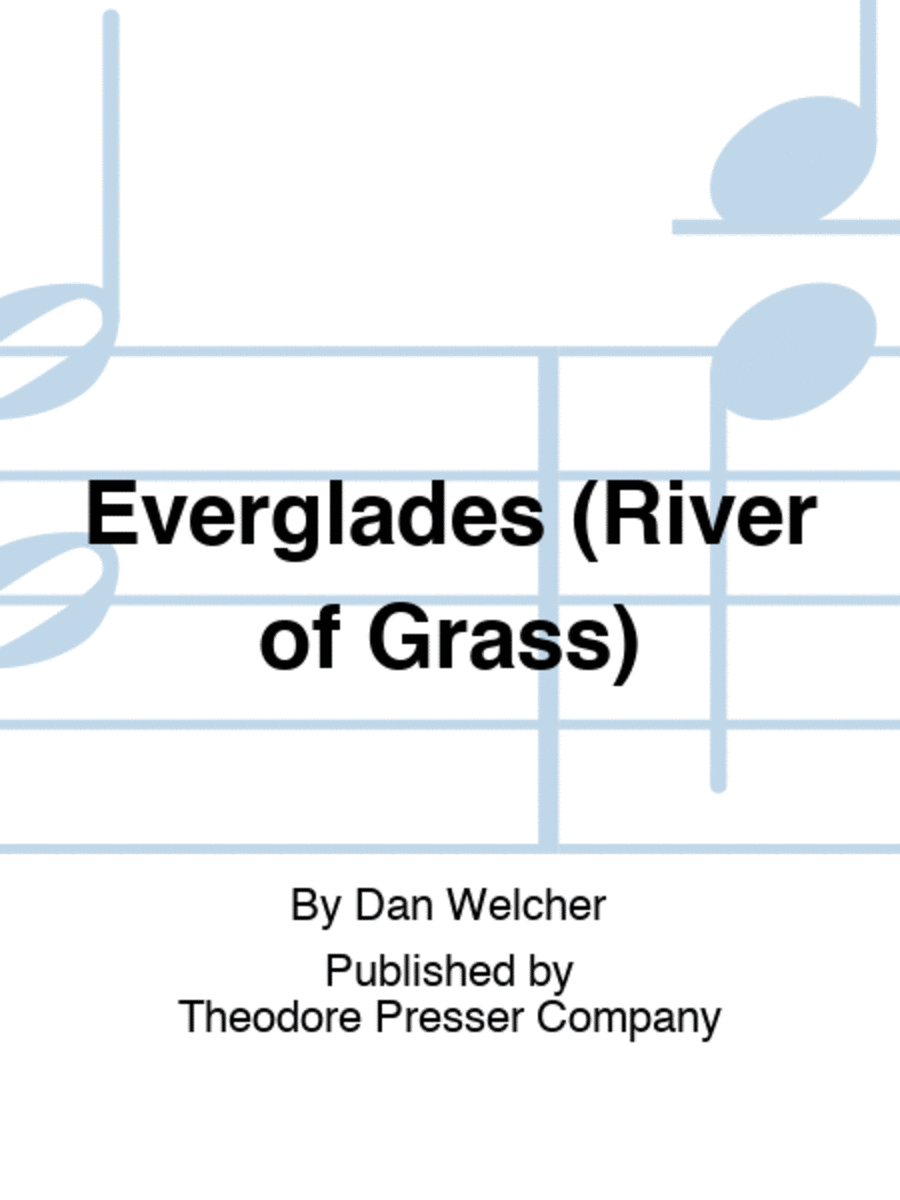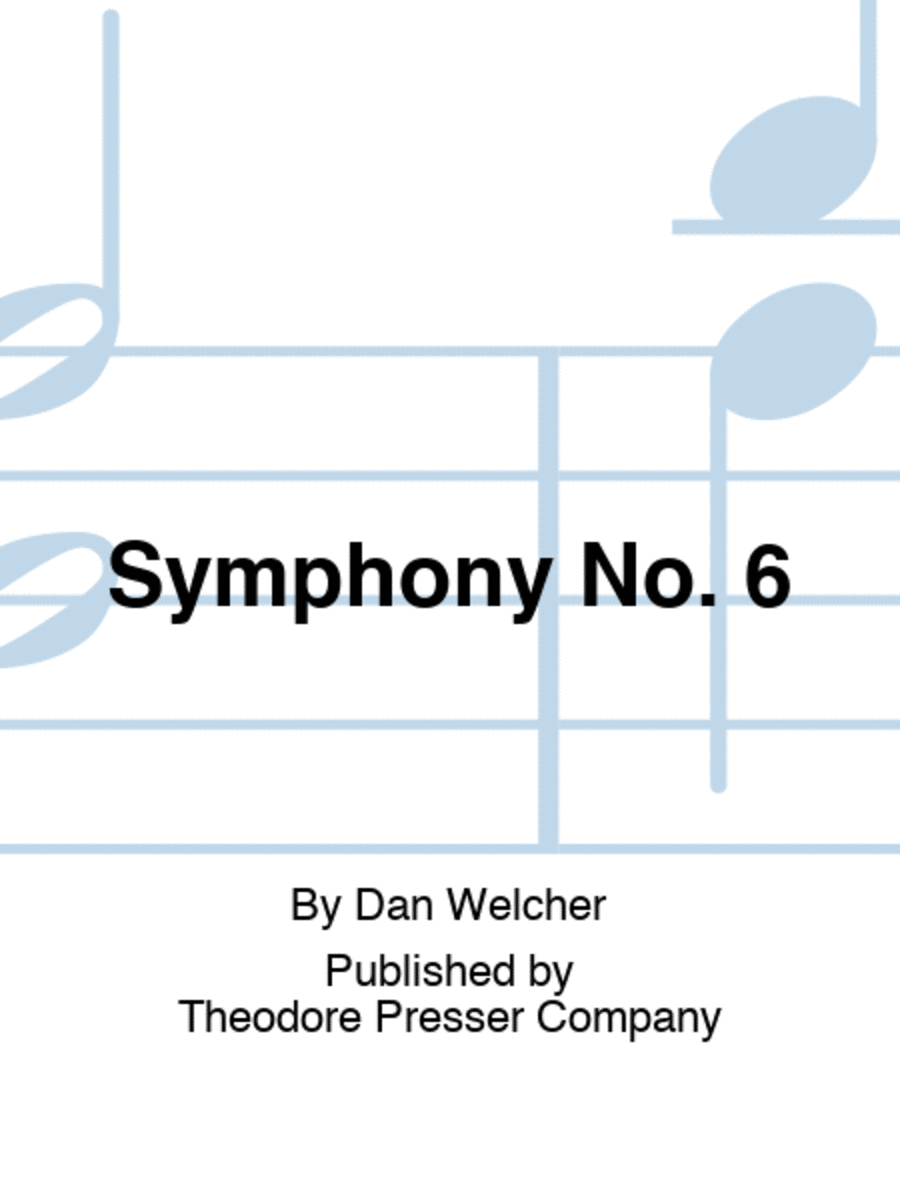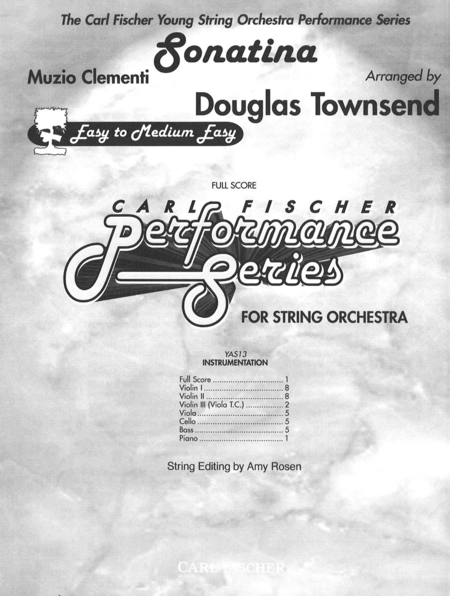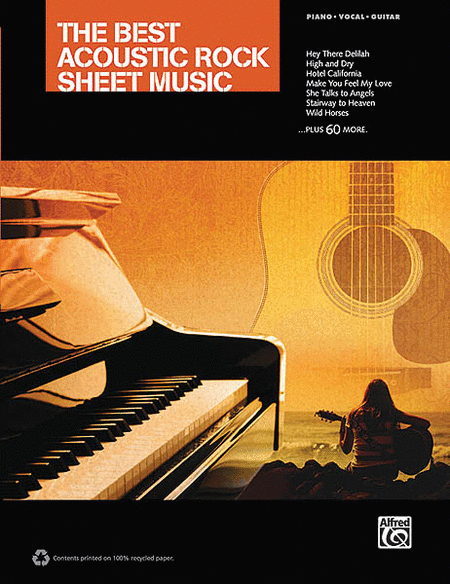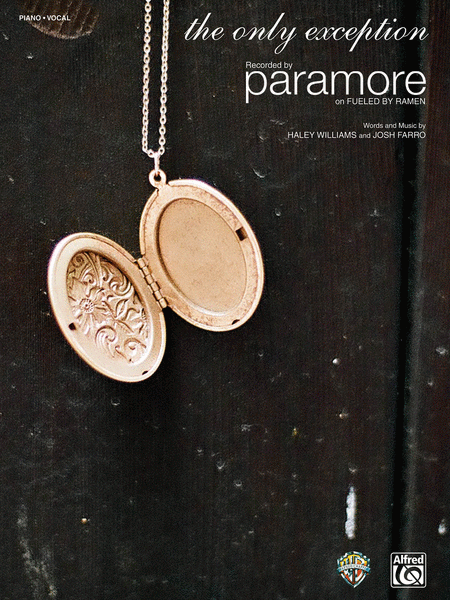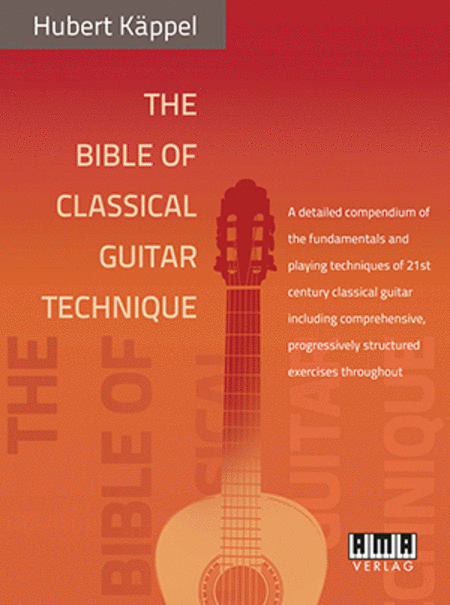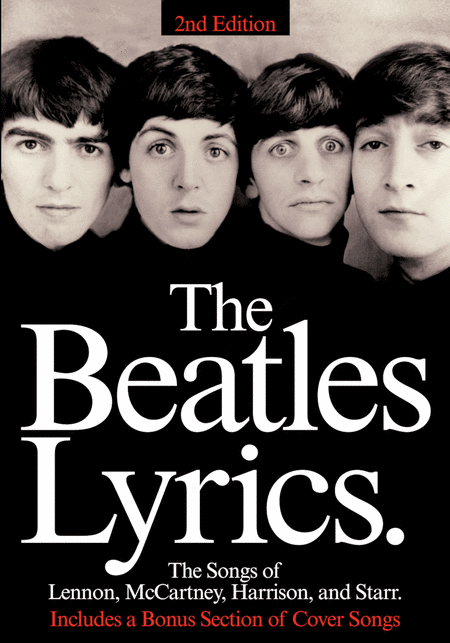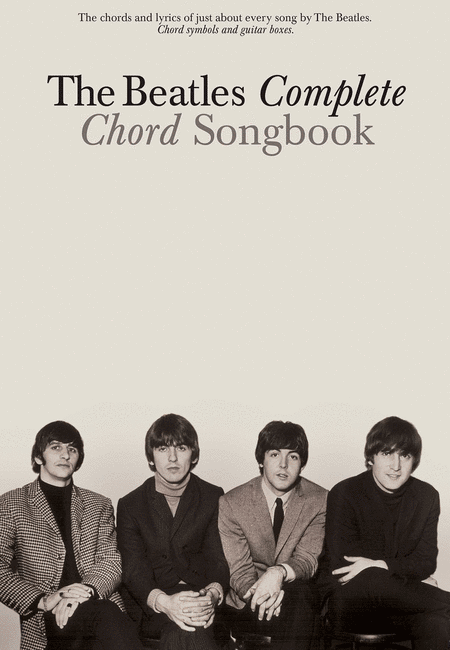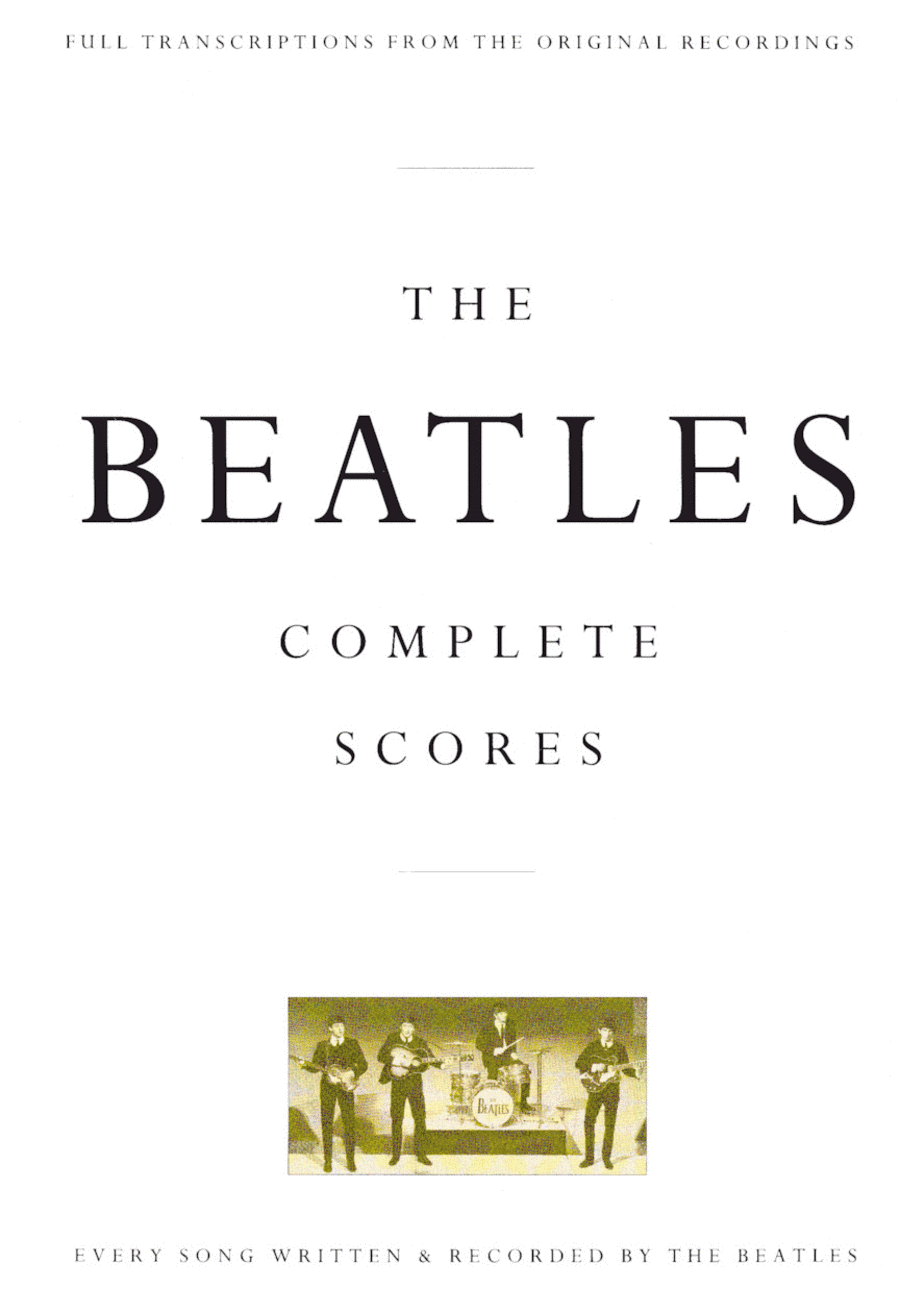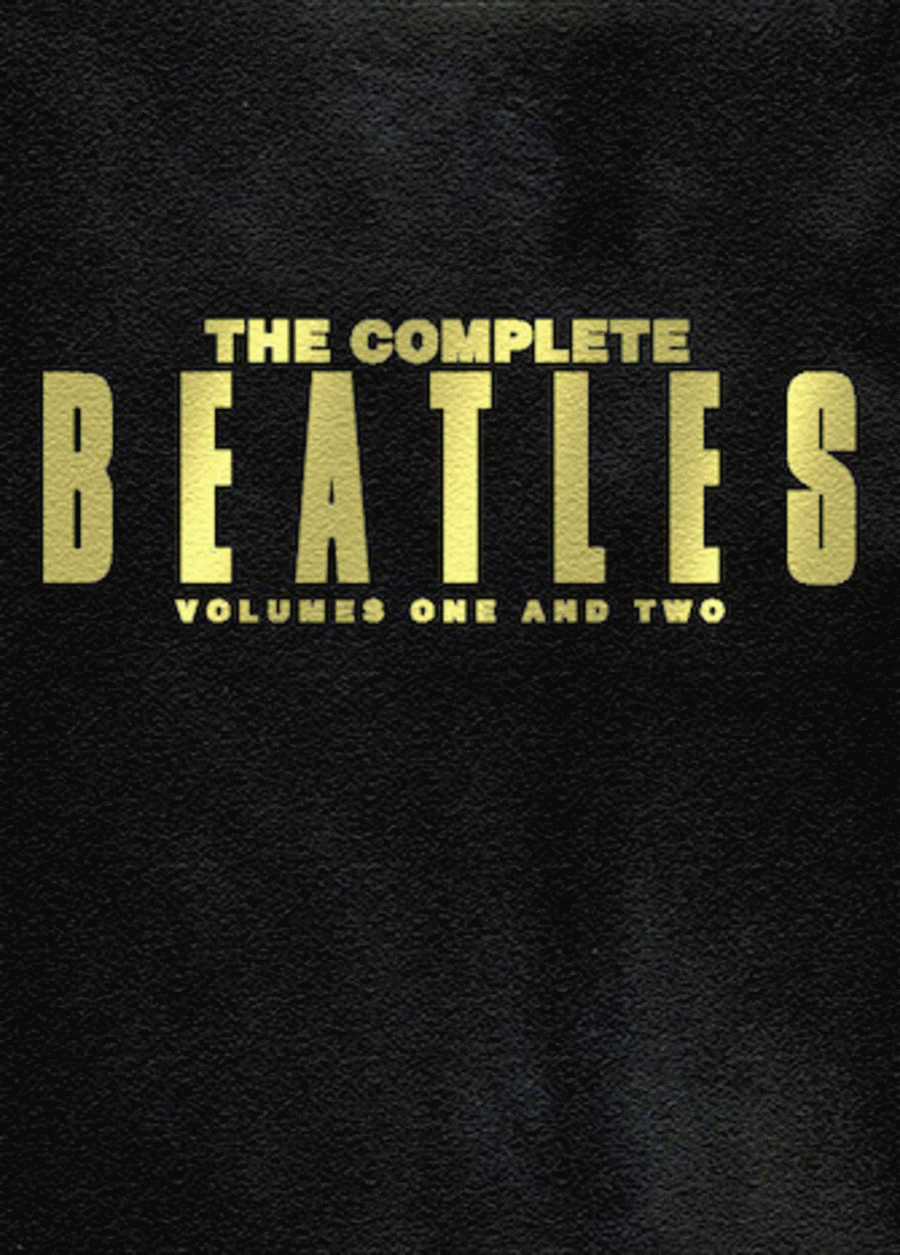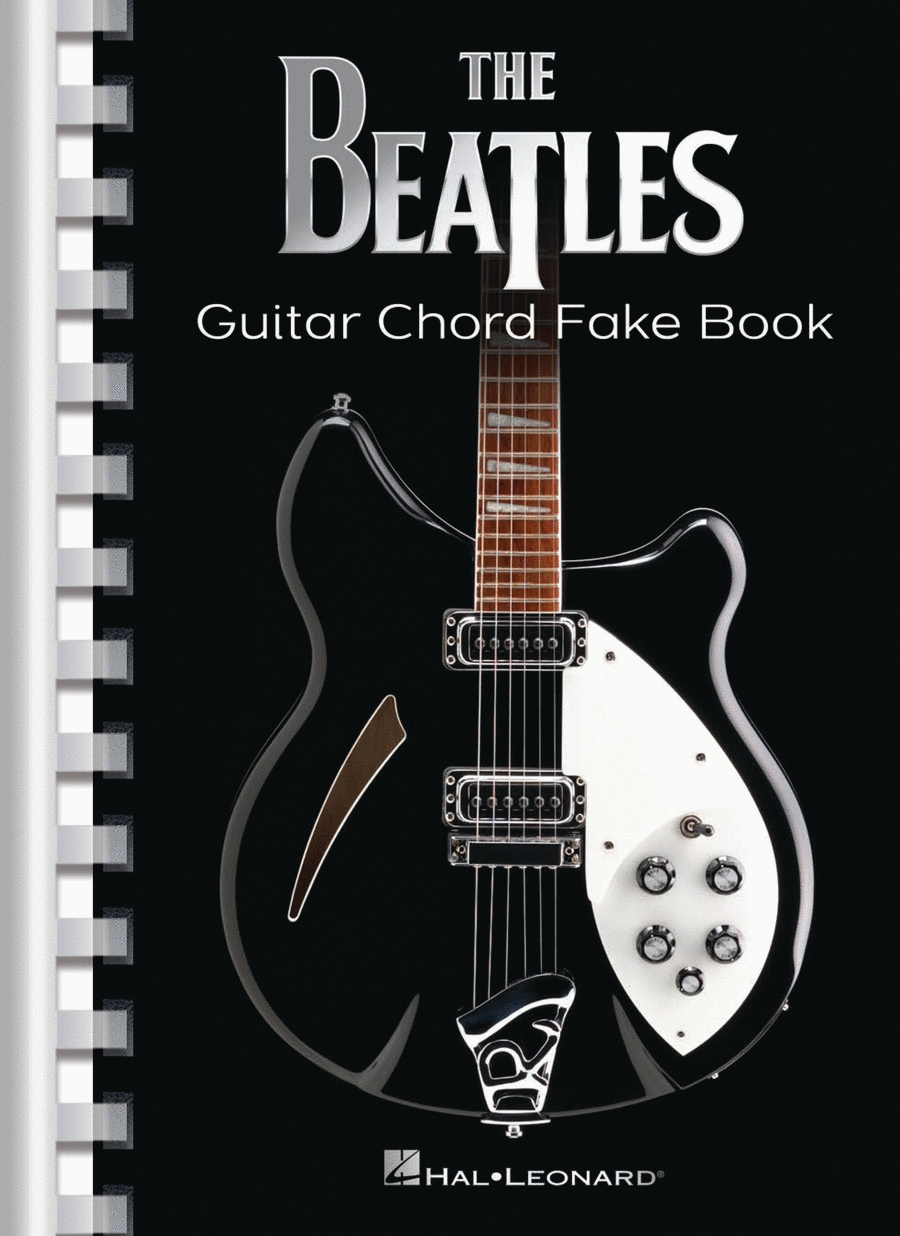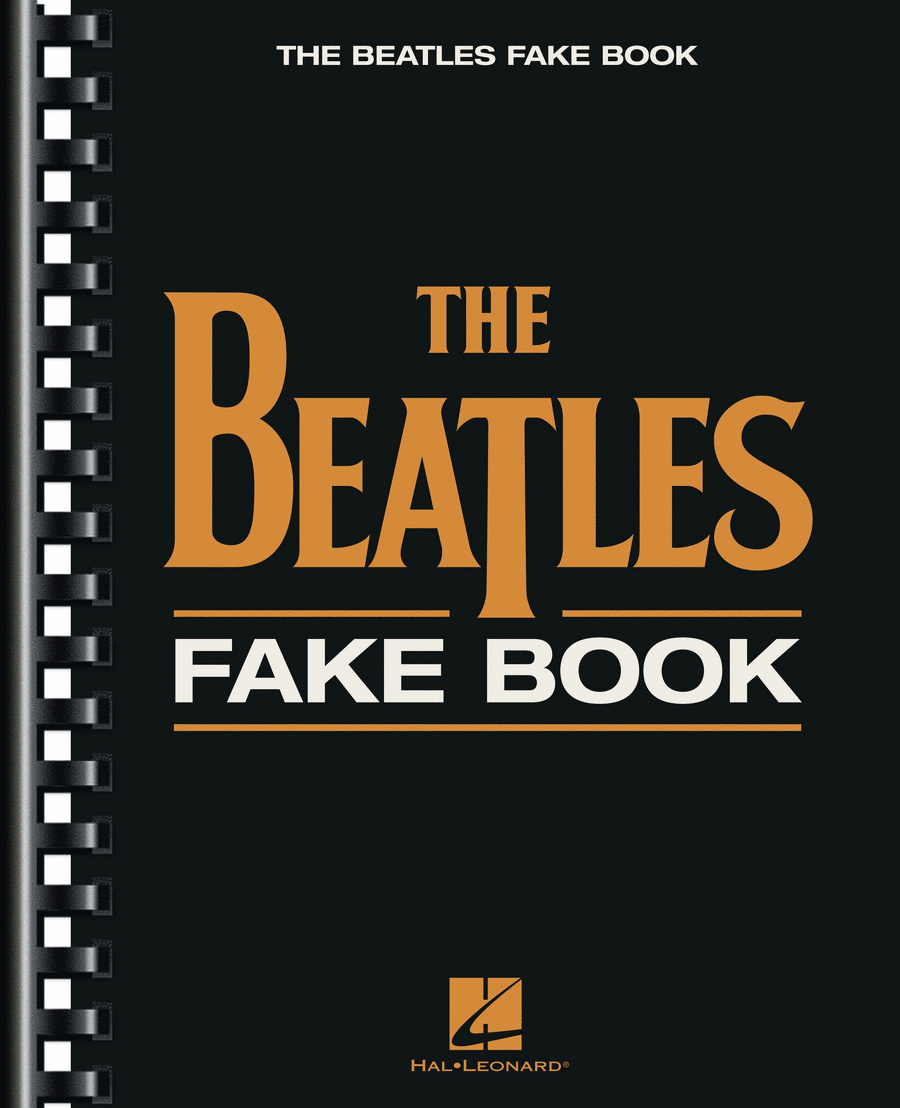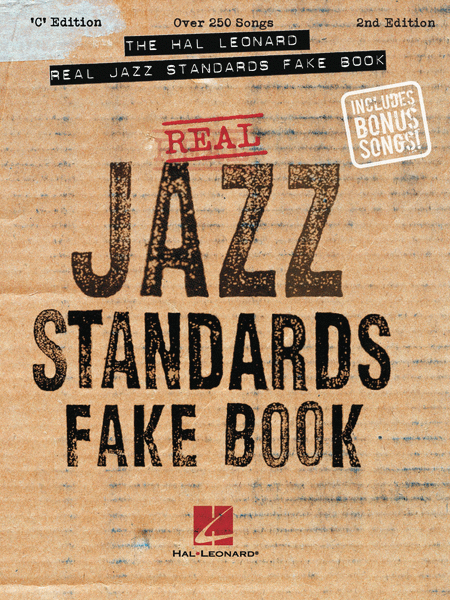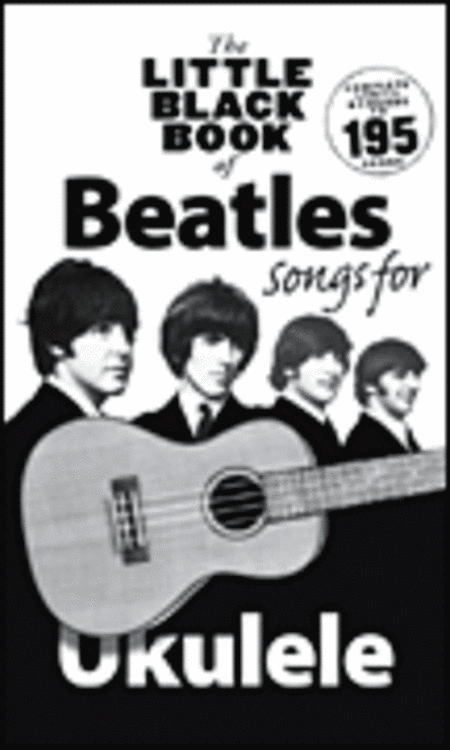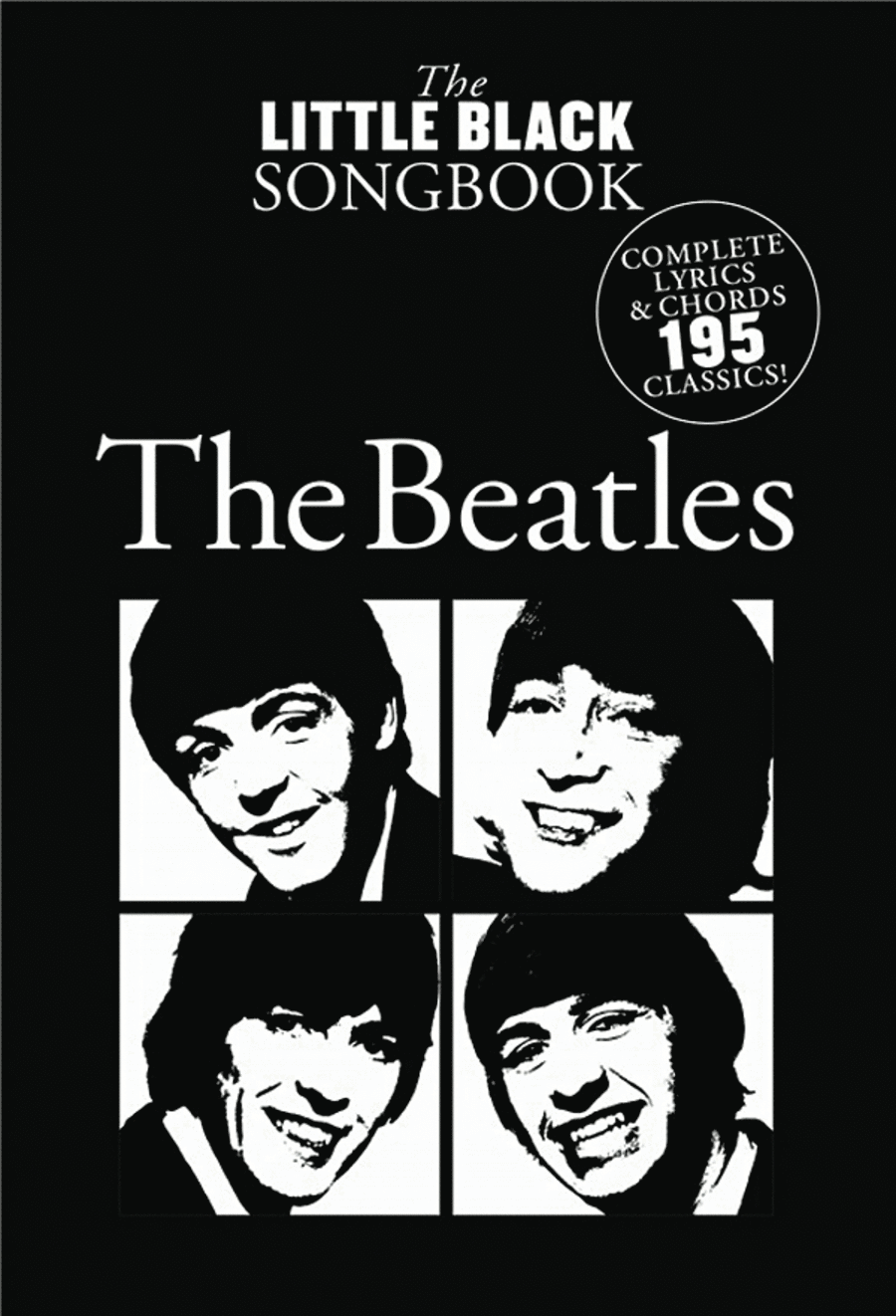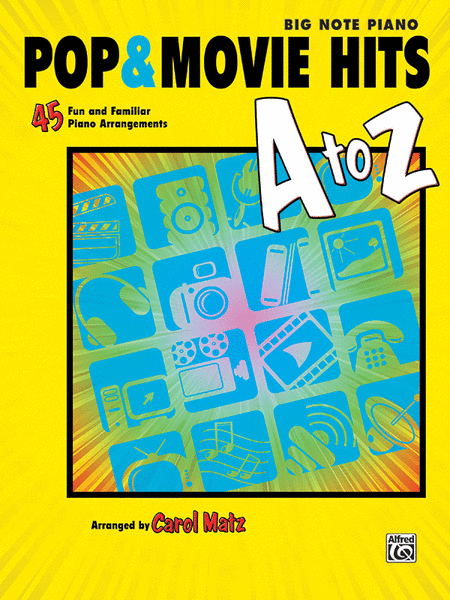|
| Transcriptions of Lieder
Piano seul
Carl Fischer
Chamber Music Piano SKU: CF.PL1056 Composed by Clara Wieck-Schumann, Fran...(+)
Chamber Music Piano
SKU: CF.PL1056
Composed by Clara
Wieck-Schumann, Franz
Schubert, and Robert
Schumann. Edited by
Nicholas Hopkins.
Collection. With Standard
notation. 128 pages. Carl
Fischer Music #PL1056.
Published by Carl Fischer
Music (CF.PL1056).
ISBN 9781491153390.
UPC: 680160910892.
Transcribed by Franz
Liszt. Introduction
It is true that Schubert
himself is somewhat to
blame for the very
unsatisfactory manner in
which his admirable piano
pieces are treated. He
was too immoderately
productive, wrote
incessantly, mixing
insignificant with
important things, grand
things with mediocre
work, paid no heed to
criticism, and always
soared on his wings. Like
a bird in the air, he
lived in music and sang
in angelic fashion.
--Franz Liszt, letter to
Dr. S. Lebert (1868) Of
those compositions that
greatly interest me,
there are only Chopin's
and yours. --Franz Liszt,
letter to Robert Schumann
(1838) She [Clara
Schumann] was astounded
at hearing me. Her
compositions are really
very remarkable,
especially for a woman.
There is a hundred times
more creativity and real
feeling in them than in
all the past and present
fantasias by Thalberg.
--Franz Liszt, letter to
Marie d'Agoult (1838)
Chretien Urhan
(1790-1845) was a
Belgian-born violinist,
organist and composer who
flourished in the musical
life of Paris in the
early nineteenth century.
According to various
accounts, he was deeply
religious, harshly
ascetic and wildly
eccentric, though revered
by many important and
influential members of
the Parisian musical
community. Regrettably,
history has forgotten
Urhan's many musical
achievements, the most
important of which was
arguably his pioneering
work in promoting the
music of Franz Schubert.
He devoted much of his
energies to championing
Schubert's music, which
at the time was unknown
outside of Vienna.
Undoubtedly, Urhan was
responsible for
stimulating this
enthusiasm in Franz
Liszt; Liszt regularly
heard Urhan's organ
playing in the
St.-Vincent-de-Paul
church in Paris, and the
two became personal
acquaintances. At
eighteen years of age,
Liszt was on the verge of
establishing himself as
the foremost pianist in
Europe, and this
awakening to Schubert's
music would prove to be a
profound experience.
Liszt's first travels
outside of his native
provincial Hungary were
to Vienna in 1821-1823,
where his father enrolled
him in studies with Carl
Czerny (piano) and
Antonio Salieri (music
theory). Both men had
important involvements
with Schubert; Czerny
(like Urhan) as performer
and advocate of
Schubert's music and
Salieri as his theory and
composition teacher from
1813-1817. Curiously,
Liszt and Schubert never
met personally, despite
their geographical
proximity in Vienna
during these years.
Inevitably, legends later
arose that the two had
been personal
acquaintances, although
Liszt would dismiss these
as fallacious: I never
knew Schubert personally,
he was once quoted as
saying. Liszt's initial
exposure to Schubert's
music was the Lieder,
what Urhan prized most of
all. He accompanied the
tenor Benedict
Randhartinger in numerous
performances of
Schubert's Lieder and
then, perhaps realizing
that he could benefit the
composer more on his own
terms, transcribed a
number of the Lieder for
piano solo. Many of these
transcriptions he would
perform himself on
concert tour during the
so-called Glanzzeit, or
time of splendor from
1839-1847. This publicity
did much to promote
reception of Schubert's
music throughout Europe.
Once Liszt retired from
the concert stage and
settled in Weimar as a
conductor in the 1840s,
he continued to perform
Schubert's orchestral
music, his Symphony No. 9
being a particular
favorite, and is credited
with giving the world
premiere performance of
Schubert's opera Alfonso
und Estrella in 1854. At
this time, he
contemplated writing a
biography of the
composer, which
regrettably remained
uncompleted. Liszt's
devotion to Schubert
would never waver.
Liszt's relationship with
Robert and Clara Schumann
was far different and far
more complicated; by
contrast, they were all
personal acquaintances.
What began as a
relationship of mutual
respect and admiration
soon deteriorated into
one of jealousy and
hostility, particularly
on the Schumann's part.
Liszt's initial contact
with Robert's music
happened long before they
had met personally, when
Liszt published an
analysis of Schumann's
piano music for the
Gazette musicale in 1837,
a gesture that earned
Robert's deep
appreciation. In the
following year Clara met
Liszt during a concert
tour in Vienna and
presented him with more
of Schumann's piano
music. Clara and her
father Friedrich Wieck,
who accompanied Clara on
her concert tours, were
quite taken by Liszt: We
have heard Liszt. He can
be compared to no other
player...he arouses
fright and astonishment.
His appearance at the
piano is indescribable.
He is an original...he is
absorbed by the piano.
Liszt, too, was impressed
with Clara--at first the
energy, intelligence and
accuracy of her piano
playing and later her
compositions--to the
extent that he dedicated
to her the 1838 version
of his Etudes d'execution
transcendante d'apres
Paganini. Liszt had a
closer personal
relationship with Clara
than with Robert until
the two men finally met
in 1840. Schumann was
astounded by Liszt's
piano playing. He wrote
to Clara that Liszt had
played like a god and had
inspired indescribable
furor of applause. His
review of Liszt even
included a heroic
personification with
Napoleon. In Leipzig,
Schumann was deeply
impressed with Liszt's
interpretations of his
Noveletten, Op. 21 and
Fantasy in C Major, Op.
17 (dedicated to Liszt),
enthusiastically
observing that, I feel as
if I had known you twenty
years. Yet a variety of
events followed that
diminished Liszt's glory
in the eyes of the
Schumanns. They became
critical of the cult-like
atmosphere that arose
around his recitals, or
Lisztomania as it came to
be called; conceivably,
this could be attributed
to professional jealousy.
Clara, in particular,
came to loathe Liszt,
noting in a letter to
Joseph Joachim, I despise
Liszt from the depths of
my soul. She recorded a
stunning diary entry a
day after Liszt's death,
in which she noted, He
was an eminent keyboard
virtuoso, but a dangerous
example for the
young...As a composer he
was terrible. By
contrast, Liszt did not
share in these negative
sentiments; no evidence
suggests that he had any
ill-regard for the
Schumanns. In Weimar, he
did much to promote
Schumann's music,
conducting performances
of his Scenes from Faust
and Manfred, during a
time in which few
orchestras expressed
interest, and premiered
his opera Genoveva. He
later arranged a benefit
concert for Clara
following Robert's death,
featuring Clara as
soloist in Robert's Piano
Concerto, an event that
must have been
exhilarating to witness.
Regardless, her opinion
of him would never
change, despite his
repeated gestures of
courtesy and respect.
Liszt's relationship with
Schubert was a spiritual
one, with music being the
one and only link between
the two men. That with
the Schumanns was
personal, with music
influenced by a hero
worship that would
aggravate the
relationship over time.
Nonetheless, Liszt would
remain devoted to and
enthusiastic for the
music and achievements of
these composers. He would
be a vital force in
disseminating their music
to a wider audience, as
he would be with many
other composers
throughout his career.
His primary means for
accomplishing this was
the piano transcription.
Liszt and the
Transcription
Transcription versus
Paraphrase Transcription
and paraphrase were
popular terms in
nineteenth-century music,
although certainly not
unique to this period.
Musicians understood that
there were clear
distinctions between
these two terms, but as
is often the case these
distinctions could be
blurred. Transcription,
literally writing over,
entails reworking or
adapting a piece of music
for a performance medium
different from that of
its original; arrangement
is a possible synonym.
Adapting is a key part of
this process, for the
success of a
transcription relies on
the transcriber's ability
to adapt the piece to the
different medium. As a
result, the pre-existing
material is generally
kept intact, recognizable
and intelligible; it is
strict, literal,
objective. Contextual
meaning is maintained in
the process, as are
elements of style and
form. Paraphrase, by
contrast, implies
restating something in a
different manner, as in a
rewording of a document
for reasons of clarity.
In nineteenth-century
music, paraphrasing
indicated elaborating a
piece for purposes of
expressive virtuosity,
often as a vehicle for
showmanship. Variation is
an important element, for
the source material may
be varied as much as the
paraphraser's imagination
will allow; its purpose
is metamorphosis.
Transcription is adapting
and arranging;
paraphrasing is
transforming and
reworking. Transcription
preserves the style of
the original; paraphrase
absorbs the original into
a different style.
Transcription highlights
the original composer;
paraphrase highlights the
paraphraser.
Approximately half of
Liszt's compositional
output falls under the
category of transcription
and paraphrase; it is
noteworthy that he never
used the term
arrangement. Much of his
early compositional
activities were
transcriptions and
paraphrases of works of
other composers, such as
the symphonies of
Beethoven and Berlioz,
vocal music by Schubert,
and operas by Donizetti
and Bellini. It is
conceivable that he
focused so intently on
work of this nature early
in his career as a means
to perfect his
compositional technique,
although transcription
and paraphrase continued
well after the technique
had been mastered; this
might explain why he
drastically revised and
rewrote many of his
original compositions
from the 1830s (such as
the Transcendental Etudes
and Paganini Etudes) in
the 1850s. Charles Rosen,
a sympathetic interpreter
of Liszt's piano works,
observes, The new
revisions of the
Transcendental Etudes are
not revisions but concert
paraphrases of the old,
and their art lies in the
technique of
transformation. The
Paganini etudes are piano
transcriptions of violin
etudes, and the
Transcendental Etudes are
piano transcriptions of
piano etudes. The
principles are the same.
He concludes by noting,
Paraphrase has shaded off
into
composition...Composition
and paraphrase were not
identical for him, but
they were so closely
interwoven that
separation is impossible.
The significance of
transcription and
paraphrase for Liszt the
composer cannot be
overstated, and the
mutual influence of each
needs to be better
understood. Undoubtedly,
Liszt the composer as we
know him today would be
far different had he not
devoted so much of his
career to transcribing
and paraphrasing the
music of others. He was
perhaps one of the first
composers to contend that
transcription and
paraphrase could be
genuine art forms on
equal par with original
pieces; he even claimed
to be the first to use
these two terms to
describe these classes of
arrangements. Despite the
success that Liszt
achieved with this type
of work, others viewed it
with circumspection and
criticism. Robert
Schumann, although deeply
impressed with Liszt's
keyboard virtuosity, was
harsh in his criticisms
of the transcriptions.
Schumann interpreted them
as indicators that
Liszt's virtuosity had
hindered his
compositional development
and suggested that Liszt
transcribed the music of
others to compensate for
his own compositional
deficiencies.
Nonetheless, Liszt's
piano transcriptions,
what he sometimes called
partitions de piano (or
piano scores), were
instrumental in promoting
composers whose music was
unknown at the time or
inaccessible in areas
outside of major European
capitals, areas that
Liszt willingly toured
during his Glanzzeit. To
this end, the
transcriptions had to be
literal arrangements for
the piano; a Beethoven
symphony could not be
introduced to an
unknowing audience if its
music had been subjected
to imaginative
elaborations and
variations. The same
would be true of the 1833
transcription of
Berlioz's Symphonie
fantastique (composed
only three years
earlier), the
astonishingly novel
content of which would
necessitate a literal and
intelligible rendering.
Opera, usually more
popular and accessible
for the general public,
was a different matter,
and in this realm Liszt
could paraphrase the
original and manipulate
it as his imagination
would allow without
jeopardizing its
reception; hence, the
paraphrases on the operas
of Bellini, Donizetti,
Mozart, Meyerbeer and
Verdi. Reminiscence was
another term coined by
Liszt for the opera
paraphrases, as if the
composer were reminiscing
at the keyboard following
a memorable evening at
the opera. Illustration
(reserved on two
occasions for Meyerbeer)
and fantasy were
additional terms. The
operas of Wagner were
exceptions. His music was
less suited to paraphrase
due to its general lack
of familiarity at the
time. Transcription of
Wagner's music was thus
obligatory, as it was of
Beethoven's and Berlioz's
music; perhaps the
composer himself insisted
on this approach. Liszt's
Lieder Transcriptions
Liszt's initial
encounters with
Schubert's music, as
mentioned previously,
were with the Lieder. His
first transcription of a
Schubert Lied was Die
Rose in 1833, followed by
Lob der Tranen in 1837.
Thirty-nine additional
transcriptions appeared
at a rapid pace over the
following three years,
and in 1846, the Schubert
Lieder transcriptions
would conclude, by which
point he had completed
fifty-eight, the most of
any composer. Critical
response to these
transcriptions was highly
favorable--aside from the
view held by
Schumann--particularly
when Liszt himself played
these pieces in concert.
Some were published
immediately by Anton
Diabelli, famous for the
theme that inspired
Beethoven's variations.
Others were published by
the Viennese publisher
Tobias Haslinger (one of
Beethoven's and
Schubert's publishers in
the 1820s), who sold his
reserves so quickly that
he would repeatedly plead
for more. However,
Liszt's enthusiasm for
work of this nature soon
became exhausted, as he
noted in a letter of 1839
to the publisher
Breitkopf und Hartel:
That good Haslinger
overwhelms me with
Schubert. I have just
sent him twenty-four new
songs (Schwanengesang and
Winterreise), and for the
moment I am rather tired
of this work. Haslinger
was justified in his
demands, for the Schubert
transcriptions were
received with great
enthusiasm. One Gottfried
Wilhelm Fink, then editor
of the Allgemeine
musikalische Zeitung,
observed of these
transcriptions: Nothing
in recent memory has
caused such sensation and
enjoyment in both
pianists and audiences as
these arrangements...The
demand for them has in no
way been satisfied; and
it will not be until
these arrangements are
seen on pianos
everywhere. They have
indeed made quite a
splash. Eduard Hanslick,
never a sympathetic
critic of Liszt's music,
acknowledged thirty years
after the fact that,
Liszt's transcriptions of
Schubert Lieder were
epoch-making. There was
hardly a concert in which
Liszt did not have to
play one or two of
them--even when they were
not listed on the
program. These
transcriptions quickly
became some of his most
sough-after pieces,
despite their extreme
technical demands.
Leading pianists of the
day, such as Clara Wieck
and Sigismond Thalberg,
incorporated them into
their concert programs
immediately upon
publication. Moreover,
the transcriptions would
serve as inspirations for
other composers, such as
Stephen Heller, Cesar
Franck and later Leopold
Godowsky, all of whom
produced their own
transcriptions of
Schubert's Lieder. Liszt
would transcribe the
Lieder of other composers
as well, including those
by Mendelssohn, Chopin,
Anton Rubinstein and even
himself. Robert Schumann,
of course, would not be
ignored. The first
transcription of a
Schumann Lied was the
celebrated Widmung from
Myrten in 1848, the only
Schumann transcription
that Liszt completed
during the composer's
lifetime. (Regrettably,
there is no evidence of
Schumann's regard of this
transcription, or even if
he was aware of it.) From
the years 1848-1881,
Liszt transcribed twelve
of Robert Schumann's
Lieder (including one
orchestral Lied) and
three of Clara (one from
each of her three
published Lieder cycles);
he would transcribe no
other works of these two
composers. The Schumann
Lieder transcriptions,
contrary to those of
Schubert, are literal
arrangements, posing, in
general, far fewer
demands on the pianist's
technique. They are
comparatively less
imaginative in their
treatment of the original
material. Additionally,
they seem to have been
less valued in their day
than the Schubert
transcriptions, and it is
noteworthy that none of
the Schumann
transcriptions bear
dedications, as most of
the Schubert
transcriptions do. The
greatest challenge posed
by Lieder transcriptions,
regardless of the
composer or the nature of
the transcription, was to
combine the vocal and
piano parts of the
original such that the
character of each would
be preserved, a challenge
unique to this form of
transcription. Each part
had to be intact and
aurally recognizable, the
vocal line in particular.
Complications could be
manifold in a Lied that
featured dissimilar
parts, such as Schubert's
Auf dem Wasser zu singen,
whose piano accompaniment
depicts the rocking of
the boat on the
shimmering waves while
the vocal line reflects
on the passing of time.
Similar complications
would be encountered in
Gretchen am Spinnrade, in
which the ubiquitous
sixteenth-note pattern in
the piano's right hand
epitomizes the
ever-turning spinning
wheel over which the
soprano voice expresses
feelings of longing and
heartache. The resulting
transcriptions for solo
piano would place
exceptional demands on
the pianist. The
complications would be
far less imposing in
instances in which voice
and piano were less
differentiated, as in
many of Schumann's Lieder
that Liszt transcribed.
The piano parts in these
Lieder are true
accompaniments for the
voice, providing harmonic
foundation and rhythmic
support by doubling the
vocal line throughout.
The transcriptions, thus,
are strict and literal,
with far fewer demands on
both pianist and
transcriber. In all of
Liszt's Lieder
transcriptions,
regardless of the way in
which the two parts are
combined, the melody
(i.e. the vocal line) is
invariably the focal
point; the melody should
sing on the piano, as if
it were the voice. The
piano part, although
integral to contributing
to the character of the
music, is designed to
function as
accompaniment. A singing
melody was a crucial
objective in
nineteenth-century piano
performance, which in
part might explain the
zeal in transcribing and
paraphrasing vocal music
for the piano. Friedrich
Wieck, father and teacher
of Clara Schumann,
stressed this point
repeatedly in his 1853
treatise Clavier und
Gesang (Piano and Song):
When I speak in general
of singing, I refer to
that species of singing
which is a form of
beauty, and which is a
foundation for the most
refined and most perfect
interpretation of music;
and, above all things, I
consider the culture of
beautiful tones the basis
for the finest possible
touch on the piano. In
many respects, the piano
and singing should
explain and supplement
each other. They should
mutually assist in
expressing the sublime
and the noble, in forms
of unclouded beauty. Much
of Liszt's piano music
should be interpreted
with this concept in
mind, the Lieder
transcriptions and opera
paraphrases, in
particular. To this end,
Liszt provided numerous
written instructions to
the performer to
emphasize the vocal line
in performance, with
Italian directives such
as un poco marcato il
canto, accentuato assai
il canto and ben
pronunziato il canto.
Repeated indications of
cantando,singend and
espressivo il canto
stress the significance
of the singing tone. As
an additional means of
achieving this and
providing the performer
with access to the
poetry, Liszt insisted,
at what must have been a
publishing novelty at the
time, on printing the
words of the Lied in the
music itself. Haslinger,
seemingly oblivious to
Liszt's intent, initially
printed the poems of the
early Schubert
transcriptions separately
inside the front covers.
Liszt argued that the
transcriptions must be
reprinted with the words
underlying the notes,
exactly as Schubert had
done, a request that was
honored by printing the
words above the
right-hand staff. Liszt
also incorporated a
visual scheme for
distinguishing voice and
accompaniment, influenced
perhaps by Chopin, by
notating the
accompaniment in cue
size. His transcription
of Robert Schumann's
Fruhlings Ankunft
features the vocal line
in normal size, the piano
accompaniment in reduced
size, an unmistakable
guide in a busy texture
as to which part should
be emphasized: Example 1.
Schumann-Liszt Fruhlings
Ankunft, mm. 1-2. The
same practice may be
found in the
transcription of
Schumann's An die Turen
will ich schleichen. In
this piece, the performer
must read three staves,
in which the baritone
line in the central staff
is to be shared between
the two hands based on
the stem direction of the
notes: Example 2.
Schumann-Liszt An die
Turen will ich
schleichen, mm. 1-5. This
notational practice is
extremely beneficial in
this instance, given the
challenge of reading
three staves and the
manner in which the vocal
line is performed by the
two hands. Curiously,
Liszt did not use this
practice in other
transcriptions.
Approaches in Lieder
Transcription Liszt
adopted a variety of
approaches in his Lieder
transcriptions, based on
the nature of the source
material, the ways in
which the vocal and piano
parts could be combined
and the ways in which the
vocal part could sing.
One approach, common with
strophic Lieder, in which
the vocal line would be
identical in each verse,
was to vary the register
of the vocal part. The
transcription of Lob der
Tranen, for example,
incorporates three of the
four verses of the
original Lied, with the
register of the vocal
line ascending one octave
with each verse (from low
to high), as if three
different voices were
participating. By the
conclusion, the music
encompasses the entire
range of Liszt's keyboard
to produce a stunning
climactic effect, and the
variety of register of
the vocal line provides a
welcome textural variety
in the absence of the
words. The three verses
of the transcription of
Auf dem Wasser zu singen
follow the same approach,
in which the vocal line
ascends from the tenor,
to the alto and to the
soprano registers with
each verse.
Fruhlingsglaube adopts
the opposite approach, in
which the vocal line
descends from soprano in
verse 1 to tenor in verse
2, with the second part
of verse 2 again resuming
the soprano register;
this is also the case in
Das Wandern from
Mullerlieder. Gretchen am
Spinnrade posed a unique
problem. Since the poem's
narrator is female, and
the poem represents an
expression of her longing
for her lover Faust,
variation of the vocal
line's register, strictly
speaking, would have been
impractical. For this
reason, the vocal line
remains in its original
register throughout,
relentlessly colliding
with the sixteenth-note
pattern of the
accompaniment. One
exception may be found in
the fifth and final verse
in mm. 93-112, at which
point the vocal line is
notated in a higher
register and doubled in
octaves. This sudden
textural change, one that
is readily audible, was a
strategic means to
underscore Gretchen's
mounting anxiety (My
bosom urges itself toward
him. Ah, might I grasp
and hold him! And kiss
him as I would wish, at
his kisses I should
die!). The transcription,
thus, becomes a vehicle
for maximizing the
emotional content of the
poem, an exceptional
undertaking with the
general intent of a
transcription. Registral
variation of the vocal
part also plays a crucial
role in the transcription
of Erlkonig. Goethe's
poem depicts the death of
a child who is
apprehended by a
supernatural Erlking, and
Schubert, recognizing the
dramatic nature of the
poem, carefully depicted
the characters (father,
son and Erlking) through
unique vocal writing and
accompaniment patterns:
the Lied is a dramatic
entity. Liszt, in turn,
followed Schubert's
characterization in this
literal transcription,
yet took it an additional
step by placing the
register of the father's
vocal line in the
baritone range, that of
the son in the soprano
range and that of the
Erlking in the highest
register, options that
would not have been
available in the version
for voice and piano.
Additionally, Liszt
labeled each appearance
of each character in the
score, a means for
guiding the performer in
interpreting the dramatic
qualities of the Lied. As
a result, the drama and
energy of the poem are
enhanced in this
transcription; as with
Gretchen am Spinnrade,
the transcriber has
maximized the content of
the original. Elaboration
may be found in certain
Lieder transcriptions
that expand the
performance to a level of
virtuosity not found in
the original; in such
cases, the transcription
approximates the
paraphrase. Schubert's Du
bist die Ruh, a paradigm
of musical simplicity,
features an uncomplicated
piano accompaniment that
is virtually identical in
each verse. In Liszt's
transcription, the
material is subjected to
a highly virtuosic
treatment that far
exceeds the original,
including a demanding
passage for the left hand
alone in the opening
measures and unique
textural writing in each
verse. The piece is a
transcription in
virtuosity; its art, as
Rosen noted, lies in the
technique of
transformation.
Elaboration may entail an
expansion of the musical
form, as in the extensive
introduction to Die
Forelle and a virtuosic
middle section (mm.
63-85), both of which are
not in the original. Also
unique to this
transcription are two
cadenzas that Liszt
composed in response to
the poetic content. The
first, in m. 93 on the
words und eh ich es
gedacht (and before I
could guess it), features
a twisted chromatic
passage that prolongs and
thereby heightens the
listener's suspense as to
the fate of the trout
(which is ultimately
caught). The second, in
m. 108 on the words
Betrogne an (and my blood
boiled as I saw the
betrayed one), features a
rush of
diminished-seventh
arpeggios in both hands,
epitomizing the poet's
rage at the fisherman for
catching the trout. Less
frequent are instances in
which the length of the
original Lied was
shortened in the
transcription, a tendency
that may be found with
certain strophic Lieder
(e.g., Der Leiermann,
Wasserflut and Das
Wandern). Another
transcription that
demonstrates Liszt's
readiness to modify the
original in the interests
of the poetic content is
Standchen, the seventh
transcription from
Schubert's
Schwanengesang. Adapted
from Act II of
Shakespeare's Cymbeline,
the poem represents the
repeated beckoning of a
man to his lover. Liszt
transformed the Lied into
a miniature drama by
transcribing the vocal
line of the first verse
in the soprano register,
that of the second verse
in the baritone register,
in effect, creating a
dialogue between the two
lovers. In mm. 71-102,
the dialogue becomes a
canon, with one voice
trailing the other like
an echo (as labeled in
the score) at the
distance of a beat. As in
other instances, the
transcription resembles
the paraphrase, and it is
perhaps for this reason
that Liszt provided an
ossia version that is
more in the nature of a
literal transcription.
The ossia version, six
measures shorter than
Schubert's original, is
less demanding
technically than the
original transcription,
thus representing an
ossia of transcription
and an ossia of piano
technique. The Schumann
Lieder transcriptions, in
general, display a less
imaginative treatment of
the source material.
Elaborations are less
frequently encountered,
and virtuosity is more
restricted, as if the
passage of time had
somewhat tamed the
composer's approach to
transcriptions;
alternatively, Liszt was
eager to distance himself
from the fierce
virtuosity of his early
years. In most instances,
these transcriptions are
literal arrangements of
the source material, with
the vocal line in its
original form combined
with the accompaniment,
which often doubles the
vocal line in the
original Lied. Widmung,
the first of the Schumann
transcriptions, is one
exception in the way it
recalls the virtuosity of
the Schubert
transcriptions of the
1830s. Particularly
striking is the closing
section (mm. 58-73), in
which material of the
opening verse (right
hand) is combined with
the triplet quarter notes
(left hand) from the
second section of the
Lied (mm. 32-43), as if
the transcriber were
attempting to reconcile
the different material of
these two sections.
Fruhlingsnacht resembles
a paraphrase by
presenting each of the
two verses in differing
registers (alto for verse
1, mm. 3-19, and soprano
for verse 2, mm. 20-31)
and by concluding with a
virtuosic section that
considerably extends the
length of the original
Lied. The original
tonalities of the Lieder
were generally retained
in the transcriptions,
showing that the tonality
was an important part of
the transcription
process. The infrequent
instances of
transposition were done
for specific reasons. In
1861, Liszt transcribed
two of Schumann's Lieder,
one from Op. 36 (An den
Sonnenschein), another
from Op. 27 (Dem roten
Roslein), and merged
these two pieces in the
collection 2 Lieder; they
share only the common
tonality of A major. His
choice for combining
these two Lieder remains
unknown, but he clearly
recognized that some
tonal variety would be
needed, for which reason
Dem roten Roslein was
transposed to C>= major.
The collection features
An den Sonnenschein in A
major (with a transition
to the new tonality),
followed by Dem roten
Roslein in C>= major
(without a change of key
signature), and
concluding with a reprise
of An den Sonnenschein in
A major. A three-part
form was thus established
with tonal variety
provided by keys in third
relations (A-C>=-A); in
effect, two of Schumann's
Lieder were transcribed
into an archetypal song
without words. In other
instances, Liszt treated
tonality and tonal
organization as important
structural ingredients,
particularly in the
transcriptions of
Schubert's Lieder cycles,
i.e. Schwanengesang,
Winterreise a... $32.99 - Voir plus => AcheterDélais: 1 to 2 weeks | | | |
| The Ultimate Fake Book - Third Edition (Bb version)
Instruments en Sib [Fake Book]
Hal Leonard
Bb Edition. Fake Book (Includes melody line and chords). Size 9x12 inches. 816 p...(+)
Bb Edition. Fake Book
(Includes melody line and
chords). Size 9x12
inches. 816 pages.
Published by Hal Leonard.
(8)$49.95 - Voir plus => AcheterDélais: 3 to 5 business days | | | |
| Gustave Vogt's Musical Album of Autographs
Cor anglais, Piano
Carl Fischer
Chamber Music English Horn, Oboe SKU: CF.WF229 15 Pieces for Oboe and ...(+)
Chamber Music English
Horn, Oboe SKU:
CF.WF229 15 Pieces
for Oboe and English
Horn. Composed by
Gustave Vogt. Edited by
Kristin Jean Leitterman.
Collection - Performance.
32+8 pages. Carl Fischer
Music #WF229. Published
by Carl Fischer Music
(CF.WF229). ISBN
9781491153789. UPC:
680160911288. Intro
duction Gustave Vogt's
Musical Paris Gustave
Vogt (1781-1870) was born
into the Age of
Enlightenment, at the
apex of the
Enlightenment's outreach.
During his lifetime he
would observe its effect
on the world. Over the
course of his life he
lived through many
changes in musical style.
When he was born,
composers such as Mozart
and Haydn were still
writing masterworks
revered today, and
eighty-nine years later,
as he departed the world,
the new realm of
Romanticism was beginning
to emerge with Mahler,
Richard Strauss and
Debussy, who were soon to
make their respective
marks on the musical
world. Vogt himself left
a huge mark on the
musical world, with
critics referring to him
as the grandfather of the
modern oboe and the
premier oboist of Europe.
Through his eighty-nine
years, Vogt would live
through what was perhaps
the most turbulent period
of French history. He
witnessed the French
Revolution of 1789,
followed by the many
newly established
governments, only to die
just months before the
establishment of the
Third Republic in 1870,
which would be the
longest lasting
government since the
beginning of the
revolution. He also
witnessed the
transformation of the
French musical world from
one in which opera
reigned supreme, to one
in which virtuosi,
chamber music, and
symphonic music ruled.
Additionally, he
experienced the
development of the oboe
right before his eyes.
When he began playing in
the late eighteenth
century, the standard
oboe had two keys (E and
Eb) and at the time of
his death in 1870, the
System Six Triebert oboe
(the instrument adopted
by Conservatoire
professor, Georges
Gillet, in 1882) was only
five years from being
developed. Vogt was born
March 18, 1781 in the
ancient town of
Strasbourg, part of the
Alsace region along the
German border. At the
time of his birth,
Strasbourg had been
annexed by Louis XIV, and
while heavily influenced
by Germanic culture, had
been loosely governed by
the French for a hundred
years. Although it is
unclear when Vogt began
studying the oboe and
when his family made its
move to the French
capital, the Vogts may
have fled Strasbourg in
1792 after much of the
city was destroyed during
the French Revolution. He
was without question
living in Paris by 1798,
as he enrolled on June 8
at the newly established
Conservatoire national de
Musique to study oboe
with the school's first
oboe professor,
Alexandre-Antoine
Sallantin (1775-1830).
Vogt's relationship with
the Conservatoire would
span over half a century,
moving seamlessly from
the role of student to
professor. In 1799, just
a year after enrolling,
he was awarded the
premier prix, becoming
the fourth oboist to
achieve this award. By
1802 he had been
appointed repetiteur,
which involved teaching
the younger students and
filling in for Sallantin
in exchange for a free
education. He maintained
this rank until 1809,
when he was promoted to
professor adjoint and
finally to professor
titulaire in 1816 when
Sallantin retired. This
was a position he held
for thirty-seven years,
retiring in 1853, making
him the longest serving
oboe professor in the
school's history. During
his tenure, he became the
most influential oboist
in France, teaching
eighty-nine students,
plus sixteen he taught
while he was professor
adjoint and professor
titulaire. Many of these
students went on to be
famous in their own
right, such as Henri Brod
(1799-1839), Apollon
Marie-Rose Barret
(1804-1879), Charles
Triebert (1810-1867),
Stanislas Verroust
(1814-1863), and Charles
Colin (1832-1881). His
influence stretches from
French to American oboe
playing in a direct line
from Charles Colin to
Georges Gillet
(1854-1920), and then to
Marcel Tabuteau
(1887-1966), the oboist
Americans lovingly
describe as the father of
American oboe playing.
Opera was an important
part of Vogt's life. His
first performing position
was with the
Theatre-Montansier while
he was still studying at
the Conservatoire.
Shortly after, he moved
to the Ambigu-Comique
and, in 1801 was
appointed as first oboist
with the Theatre-Italien
in Paris. He had been in
this position for only a
year, when he began
playing first oboe at the
Opera-Comique. He
remained there until
1814, when he succeeded
his teacher,
Alexandre-Antoine
Sallantin, as soloist
with the Paris Opera, the
top orchestra in Paris at
the time. He played with
the Paris Opera until
1834, all the while
bringing in his current
and past students to fill
out the section. In this
position, he began to
make a name for himself;
so much so that specific
performances were
immortalized in memoirs
and letters. One comes
from a young Hector
Berlioz (1803-1865) after
having just arrived in
Paris in 1822 and
attended the Paris
Opera's performance of
Mehul's Stratonice and
Persuis' ballet Nina. It
was in response to the
song Quand le bien-amie
reviendra that Berlioz
wrote: I find it
difficult to believe that
that song as sung by her
could ever have made as
true and touching an
effect as the combination
of Vogt's instrument...
Shortly after this,
Berlioz gave up studying
medicine and focused on
music. Vogt frequently
made solo and chamber
appearances throughout
Europe. His busiest
period of solo work was
during the 1820s. In 1825
and 1828 he went to
London to perform as a
soloist with the London
Philharmonic Society.
Vogt also traveled to
Northern France in 1826
for concerts, and then in
1830 traveled to Munich
and Stuttgart, visiting
his hometown of
Strasbourg on the way.
While on tour, Vogt
performed Luigi
Cherubini's (1760-1842)
Ave Maria, with soprano
Anna (Nanette) Schechner
(1806-1860), and a
Concertino, presumably
written by himself. As a
virtuoso performer in
pursuit of repertoire to
play, Vogt found himself
writing much of his own
music. His catalog
includes chamber music,
variation sets, vocal
music, concerted works,
religious music, wind
band arrangements, and
pedagogical material. He
most frequently performed
his variation sets, which
were largely based on
themes from popular
operas he had, presumably
played while he was at
the Opera. He made his
final tour in 1839,
traveling to Tours and
Bordeaux. During this
tour he appeared with the
singer Caroline Naldi,
Countess de Sparre, and
the violinist Joseph
Artot (1815-1845). This
ended his active career
as a soloist. His
performance was described
in the Revue et gazette
musicale de Paris as
having lost none of his
superiority over the
oboe.... It's always the
same grace, the same
sweetness. We made a trip
to Switzerland, just by
closing your eyes and
listening to Vogt's oboe.
Vogt was also active
performing in Paris as a
chamber and orchestral
musician. He was one of
the founding members of
the Societe des Concerts
du Conservatoire, a group
established in 1828 by
violinist and conductor
Francois-Antoine Habeneck
(1781-1849). The group
featured faculty and
students performing
alongside each other and
works such as Beethoven
symphonies, which had
never been heard in
France. He also premiered
the groundbreaking
woodwind quintets of
Antonin Reicha
(1770-1836). After his
retirement from the Opera
in 1834 and from the
Societe des Concerts du
Conservatoire in 1842,
Vogt began to slow down.
His final known
performance was of
Cherubini's Ave Maria on
English horn with tenor
Alexis Dupont (1796-1874)
in 1843. He then began to
reflect on his life and
the people he had known.
When he reached his 60s,
he began gathering
entries for his Musical
Album of Autographs.
Autograph Albums Vogt's
Musical Album of
Autographs is part of a
larger practice of
keeping autograph albums,
also commonly known as
Stammbuch or Album
Amicorum (meaning book of
friendship or friendship
book), which date back to
the time of the
Reformation and the
University of Wittenberg.
It was during the
mid-sixteenth century
that students at the
University of Wittenberg
began passing around
bibles for their fellow
students and professors
to sign, leaving messages
to remember them by as
they moved on to the next
part of their lives. The
things people wrote were
mottos, quotes, and even
drawings of their family
coat of arms or some
other scene that meant
something to the owner.
These albums became the
way these young students
remembered their school
family once they had
moved on to another
school or town. It was
also common for the
entrants to comment on
other entries and for the
owner to amend entries
when they learned of
important life details
such as marriage or
death. As the practice
continued, bibles were
set aside for emblem
books, which was a
popular book genre that
featured allegorical
illustrations (emblems)
in a tripartite form:
image, motto, epigram.
The first emblem book
used for autographs was
published in 1531 by
Andrea Alciato
(1492-1550), a collection
of 212 Latin emblem
poems. In 1558, the first
book conceived for the
purpose of the album
amicorum was published by
Lyon de Tournes
(1504-1564) called the
Thesaurus Amicorum. These
books continued to
evolve, and spread to
wider circles away from
universities. Albums
could be found being kept
by noblemen, physicians,
lawyers, teachers,
painters, musicians, and
artisans. The albums
eventually became more
specialized, leading to
Musical Autograph Albums
(or Notestammbucher).
Before this
specialization, musicians
contributed in one form
or another, but our
knowledge of them in
these albums is mostly
limited to individual
people or events. Some
would simply sign their
name while others would
insert a fragment of
music, usually a canon
(titled fuga) with text
in Latin. Canons were
popular because they
displayed the
craftsmanship of the
composer in a limited
space. Composers
well-known today,
including J. S. Bach,
Telemann, Mozart,
Beethoven, Dowland, and
Brahms, all participated
in the practice, with
Beethoven being the first
to indicate an interest
in creating an album only
of music. This interest
came around 1815. In an
1845 letter from Johann
Friedrich Naue to
Heinrich Carl
Breidenstein, Naue
recalled an 1813 visit
with Beethoven, who
presented a book
suggesting Naue to
collect entries from
celebrated musicians as
he traveled. Shortly
after we find Louis Spohr
speaking about leaving on
his grand tour through
Europe in 1815 and of his
desire to carry an album
with entries from the
many artists he would
come across. He wrote in
his autobiography that
his most valuable
contribution came from
Beethoven in 1815.
Spohr's Notenstammbuch,
comprised only of musical
entries, is
groundbreaking because it
was coupled with a
concert tour, allowing
him to reach beyond the
Germanic world, where the
creation of these books
had been nearly
exclusive. Spohr brought
the practice of
Notenstammbucher to
France, and in turn
indirectly inspired Vogt
to create a book of his
own some fifteen years
later. Vogt's Musical
Album of Autographs
Vogt's Musical Album of
Autographs acts as a form
of a memoir, displaying
mementos of musicians who
held special meaning in
his life as well as
showing those with whom
he was enamored from the
younger generation. The
anonymous Pie Jesu
submitted to Vogt in 1831
marks the beginning of an
album that would span
nearly three decades by
the time the final entry,
an excerpt from Charles
Gounod's (1818-1893)
Faust, which premiered in
1859, was submitted.
Within this album we find
sixty-two entries from
musicians whom he must
have known very well
because they were
colleagues at the
Conservatoire, or
composers of opera whose
works he was performing
with the Paris Opera.
Other entries came from
performers with whom he
had performed and some
who were simply passing
through Paris, such as
Joseph Joachim
(1831-1907). Of the
sixty-three total
entries, some are
original, unpublished
works, while others came
from well-known existing
works. Nineteen of these
works are for solo piano,
sixteen utilize the oboe
or English horn, thirteen
feature the voice (in
many different
combinations, including
vocal solos with piano,
and small choral settings
up to one with double
choir), two feature
violin as a solo
instrument, and one even
features the now obscure
ophicleide. The
connections among the
sixty-two contributors to
Vogt's album are
virtually never-ending.
All were acquainted with
Vogt in some capacity,
from long-time
friendships to
relationships that were
created when Vogt
requested their entry.
Thus, while Vogt is the
person who is central to
each of these musicians,
the web can be greatly
expanded. In general, the
connections are centered
around the Conservatoire,
teacher lineages, the
Opera, and performing
circles. The
relationships between all
the contributors in the
album parallel the
current musical world, as
many of these kinds of
relationships still
exist, and permit us to
fantasize who might be
found in an album created
today by a musician of
the same standing. Also
important, is what sort
of entries the
contributors chose to
pen. The sixty-three
entries are varied, but
can be divided into
published and unpublished
works. Within the
published works, we find
opera excerpts, symphony
excerpts, mass excerpts,
and canons, while the
unpublished works include
music for solo piano,
oboe or English horn,
string instruments
(violin and cello), and
voice (voice with piano
and choral). The music
for oboe and English horn
works largely belong in
the unpublished works of
the album. These entries
were most likely written
to honor Vogt. Seven are
for oboe and piano and
were contributed by
Joseph Joachim, Pauline
Garcia Viardot
(1821-1910), Joseph
Artot, Anton Bohrer
(1783-1852), Georges
Onslow (1784-1853),
Desire Beaulieu
(1791-1863), and Narcisse
Girard (1797-1860). The
common thread between
these entries is the
simplicity of the melody
and structure. Many are
repetitive, especially
Beaulieu's entry, which
features a two-note
ostinato throughout the
work, which he even
included in his
signature. Two composers
contributed pieces for
English horn and piano,
and like the previous
oboe entries, are simple
and repetitive. These
were written by Michele
Carafa (1787-1872) and
Louis Clapisson
(1808-1866). There are
two other entries that
were unpublished works
and are chamber music.
One is an oboe trio by
Jacques Halevy
(1799-1862) and the other
is for oboe and strings
(string trio) by J. B.
Cramer (1771-1858). There
are five published works
in the album for oboe and
English horn. There are
three from operas and the
other two from symphonic
works. Ambroise Thomas
(1811-1896) contributed
an excerpt from the
Entr'acte of his opera La
Guerillero, and was
likely chosen because the
oboe was featured at this
moment. Hippolyte Chelard
(1789-1861) also chose to
honor Vogt by writing for
English horn. His entry,
for English horn and
piano, is taken from his
biggest success, Macbeth.
The English horn part was
actually taken from Lady
Macbeth's solo in the
sleepwalking scene.
Vogt's own entry also
falls into this category,
as he entered an excerpt
from Donizetti's Maria di
Rohan. The excerpt he
chose is a duet between
soprano and English horn.
There are two entries
featuring oboe that are
excerpted from symphonic
repertoire. One is a
familiar oboe melody from
Beethoven's Pastoral
Symphony entered by his
first biographer, Anton
Schindler (1796-1864).
The other is an excerpt
from Berlioz's choral
symphony, Romeo et
Juliette. He entered an
oboe solo from the Grand
Fete section of the
piece. Pedagogical
benefit All of these
works are lovely, and fit
within the album
wonderfully, but these
works also are great oboe
and English horn music
for young students. The
common thread between
these entries is the
simplicity of the melody
and structure. Many are
repetitive, especially
Beaulieu's entry, which
features a two-note
ostinato throughout the
work in the piano. This
repetitive structure is
beneficial for young
students for searching
for a short solo to
present at a studio
recital, or simply to
learn. They also work
many technical issues a
young player may
encounter, such as
mastering the rolling
finger to uncover and
recover the half hole.
This is true of Bealieu's
Pensee as well as
Onslow's Andantino.
Berlioz's entry from
Romeo et Juliette
features very long
phrases, which helps with
endurance and helps keep
the air spinning through
the oboe. Some of the
pieces also use various
levels of ornamentation,
from trills to grace
notes, and short
cadenzas. This allows the
student to learn
appropriate ways to
phrase with these added
notes. The chamber music
is a valuable way to
start younger students
with chamber music,
especially the short
quartet by Cramer for
oboe and string trio. All
of these pieces will not
tax the student to learn
a work that is more
advanced, as well as give
them a full piece that
they can work on from
beginning to end in a
couple weeks, instead of
months. Editorial Policy
The works found in this
edition are based on the
manuscript housed at the
Morgan Library in New
York City (call number
Cary 348, V886. A3). When
possible, published
scores were consulted and
compared to clarify pitch
and text. The general
difficulties in creating
an edition of these works
stem from entries that
appear to be hastily
written, and thus omit
complete articulations
and dynamic indications
for all passages and
parts. The manuscript has
been modernized into a
performance edition. The
score order from the
manuscript has been
retained. If an entry
also exists in a
published work, and this
was not indicated on the
manuscript, appropriate
titles and subtitles have
been added tacitly. For
entries that were
untitled, the beginning
tempo marking or
expressive directive has
been added as its title
tacitly. Part names have
been changed from the
original language to
English. If no part name
was present, it was added
tacitly. All scores are
transposing where
applicable. Measure
numbers have been added
at the beginning of every
system. Written
directives have been
retained in the original
language and are placed
relative to where they
appear in the manuscript.
Tempo markings from the
manuscript have been
retained, even if they
were abbreviated, i.e.,
Andte. The barlines,
braces, brackets, and
clefs are modernized. The
beaming and stem
direction has been
modernized. Key
signatures have been
modernized as some of the
flats/sharps do not
appear on the correct
lines or spaces. Time
signatures have been
modernized. In a few
cases, when a time
signature was missing in
the manuscript, it has
been added tacitly.
Triplet and rhythmic
groupings have been
modernized. Slurs, ties,
and articulations
(staccato and accent)
have been modernized.
Slurs, ties, and
articulations have been
added to parallel
passages tacitly.
Courtesy accidentals
found in the manuscript
have been removed, unless
it appeared to be helpful
to the performer. Dynamic
indications from the
manuscript have been
retained, except where
noted. --Kristin
Leitterman.
Introducti
onGustave Vogt’s
Musical ParisGustave Vogt
(1781–1870) was
born into the “Age
of Enlightenment,â€
at the apex of the
Enlightenment’s
outreach. During his
lifetime he would observe
its effect on the world.
Over the course of his
life he lived through
many changes in musical
style. When he was born,
composers such as Mozart
and Haydn were still
writing masterworks
revered today, and
eighty-nine years later,
as he departed the world,
the new realm of
Romanticism was beginning
to emerge with Mahler,
Richard Strauss and
Debussy, who were soon to
make their respective
marks on the musical
world. Vogt himself left
a huge mark on the
musical world, with
critics referring to him
as the “grandfather
of the modern oboeâ€
and the “premier
oboist of
Europe.â€Through his
eighty-nine years, Vogt
would live through what
was perhaps the most
turbulent period of
French history. He
witnessed the French
Revolution of 1789,
followed by the many
newly established
governments, only to die
just months before the
establishment of the
Third Republic in 1870,
which would be the
longest lasting
government since the
beginning of the
revolution. He also
witnessed the
transformation of the
French musical world from
one in which opera
reigned supreme, to one
in which virtuosi,
chamber music, and
symphonic music ruled.
Additionally, he
experienced the
development of the oboe
right before his eyes.
When he began playing in
the late eighteenth
century, the standard
oboe had two keys (E and
Eb) and at the time of
his death in 1870, the
“System Sixâ€
Triébert oboe (the
instrument adopted by
Conservatoire professor,
Georges Gillet, in 1882)
was only five years from
being developed.Vogt was
born March 18, 1781 in
the ancient town of
Strasbourg, part of the
Alsace region along the
German border. At the
time of his birth,
Strasbourg had been
annexed by Louis XIV, and
while heavily influenced
by Germanic culture, had
been loosely governed by
the French for a hundred
years. Although it is
unclear when Vogt began
studying the oboe and
when his family made its
move to the French
capital, the Vogts may
have fled Strasbourg in
1792 after much of the
city was destroyed during
the French Revolution. He
was without question
living in Paris by 1798,
as he enrolled on June 8
at the newly established
Conservatoire national de
Musique to study oboe
with the school’s
first oboe professor,
Alexandre-Antoine
Sallantin
(1775–1830).Vogtâ
€™s relationship with
the Conservatoire would
span over half a century,
moving seamlessly from
the role of student to
professor. In 1799, just
a year after enrolling,
he was awarded the
premier prix, becoming
the fourth oboist to
achieve this award. By
1802 he had been
appointed
répétiteur, which
involved teaching the
younger students and
filling in for Sallantin
in exchange for a free
education. He maintained
this rank until 1809,
when he was promoted to
professor adjoint and
finally to professor
titulaire in 1816 when
Sallantin retired. This
was a position he held
for thirty-seven years,
retiring in 1853, making
him the longest serving
oboe professor in the
school’s history.
During his tenure, he
became the most
influential oboist in
France, teaching
eighty-nine students,
plus sixteen he taught
while he was professor
adjoint and professor
titulaire. Many of these
students went on to be
famous in their own
right, such as Henri Brod
(1799–1839),
Apollon Marie-Rose Barret
(1804–1879),
Charles Triebert
(1810–1867),
Stanislas Verroust
(1814–1863), and
Charles Colin
(1832–1881). His
influence stretches from
French to American oboe
playing in a direct line
from Charles Colin to
Georges Gillet
(1854–1920), and
then to Marcel Tabuteau
(1887–1966), the
oboist Americans lovingly
describe as the
“father of American
oboe playing.â€Opera
was an important part of
Vogt’s life. His
first performing position
was with the
Théâtre-Montansier
while he was still
studying at the
Conservatoire. Shortly
after, he moved to the
Ambigu-Comique and, in
1801 was appointed as
first oboist with the
Théâtre-Italien in
Paris. He had been in
this position for only a
year, when he began
playing first oboe at the
Opéra-Comique. He
remained there until
1814, when he succeeded
his teacher,
Alexandre-Antoine
Sallantin, as soloist
with the Paris Opéra,
the top orchestra in
Paris at the time. He
played with the Paris
Opéra until 1834, all
the while bringing in his
current and past students
to fill out the section.
In this position, he
began to make a name for
himself; so much so that
specific performances
were immortalized in
memoirs and letters. One
comes from a young Hector
Berlioz
(1803–1865) after
having just arrived in
Paris in 1822 and
attended the Paris
Opéra’s
performance of
Mehul’s Stratonice
and Persuis’
ballet Nina. It was in
response to the song
Quand le bien-amié
reviendra that Berlioz
wrote: “I find it
difficult to believe that
that song as sung by her
could ever have made as
true and touching an
effect as the combination
of Vogt’s
instrument…â€
Shortly after this,
Berlioz gave up studying
medicine and focused on
music.Vogt frequently
made solo and chamber
appearances throughout
Europe. His busiest
period of solo work was
during the 1820s. In 1825
and 1828 he went to
London to perform as a
soloist with the London
Philharmonic Society.
Vogt also traveled to
Northern France in 1826
for concerts, and then in
1830 traveled to Munich
and Stuttgart, visiting
his hometown of
Strasbourg on the way.
While on tour, Vogt
performed Luigi
Cherubini’s
(1760–1842) Ave
Maria, with soprano Anna
(Nanette) Schechner
(1806–1860), and a
Concertino, presumably
written by himself. As a
virtuoso performer in
pursuit of repertoire to
play, Vogt found himself
writing much of his own
music. His catalog
includes chamber music,
variation sets, vocal
music, concerted works,
religious music, wind
band arrangements, and
pedagogical material. He
most frequently performed
his variation sets, which
were largely based on
themes from popular
operas he had, presumably
played while he was at
the Opéra.He made his
final tour in 1839,
traveling to Tours and
Bordeaux. During this
tour he appeared with the
singer Caroline Naldi,
Countess de Sparre, and
the violinist Joseph
Artôt
(1815–1845). This
ended his active career
as a soloist. His
performance was described
in the Revue et gazette
musicale de Paris as
having “lost none
of his superiority over
the oboe….
It’s always the
same grace, the same
sweetness. We made a trip
to Switzerland, just by
closing your eyes and
listening to
Vogt’s
oboe.â€Vogt was also
active performing in
Paris as a chamber and
orchestral musician. He
was one of the founding
members of the
Société des
Concerts du
Conservatoire, a group
established in 1828 by
violinist and conductor
François-Antoine
Habeneck
(1781–1849). The
group featured faculty
and students performing
alongside each other and
works such as Beethoven
symphonies, which had
never been heard in
France. He also premiered
the groundbreaking
woodwind quintets of
Antonin Reicha
(1770–1836).After
his retirement from the
Opéra in 1834 and from
the Société des
Concerts du Conservatoire
in 1842, Vogt began to
slow down. His final
known performance was of
Cherubini’s Ave
Maria on English horn
with tenor Alexis Dupont
(1796–1874) in
1843. He then began to
reflect on his life and
the people he had known.
When he reached his 60s,
he began gathering
entries for his Musical
Album of
Autographs.Autograph
AlbumsVogt’s
Musical Album of
Autographs is part of a
larger practice of
keeping autograph albums,
also commonly known as
Stammbuch or Album
Amicorum (meaning book of
friendship or friendship
book), which date back to
the time of the
Reformation and the
University of Wittenberg.
It was during the
mid-sixteenth century
that students at the
University of Wittenberg
began passing around
bibles for their fellow
students and professors
to sign, leaving messages
to remember them by as
they moved on to the next
part of their lives. The
things people wrote were
mottos, quotes, and even
drawings of their family
coat of arms or some
other scene that meant
something to the owner.
These albums became the
way these young students
remembered their school
family once they had
moved on to another
school or town. It was
also common for the
entrants to comment on
other entries and for the
owner to amend entries
when they learned of
important life details
such as marriage or
death.As the practice
continued, bibles were
set aside for emblem
books, which was a
popular book genre that
featured allegorical
illustrations (emblems)
in a tripartite form:
image, motto, epigram.
The first emblem book
used for autographs was
published in 1531 by
Andrea Alciato
(1492–1550), a
collection of 212 Latin
emblem poems. In 1558,
the first book conceived
for the purpose of the
album amicorum was
published by Lyon de
Tournes
(1504–1564) called
the Thesaurus Amicorum.
These books continued to
evolve, and spread to
wider circles away from
universities. Albums
could be found being kept
by noblemen, physicians,
lawyers, teachers,
painters, musicians, and
artisans.The albums
eventually became more
specialized, leading to
Musical Autograph Albums
(or Notestammbücher).
Before this
specialization, musicians
contributed in one form
or another, but our
knowledge of them in
these albums is mostly
limited to individual
people or events. Some
would simply sign their
name while others would
insert a fragment of
music, usually a canon
(titled fuga) with text
in Latin. Canons were
popular because they
displayed the
craftsmanship of the
composer in a limited
space. Composers
well-known today,
including J. S. Bach,
Telemann, Mozart,
Beethoven, Dowland, and
Brahms, all participated
in the practice, with
Beethoven being the first
to indicate an interest
in creating an album only
of music.This interest
came around 1815. In an
1845 letter from Johann
Friedrich Naue to
Heinrich Carl
Breidenstein, Naue
recalled an 1813 visit
with Beethoven, who
presented a book
suggesting Naue to
collect entries from
celebrated musicians as
he traveled. Shortly
after we find Louis Spohr
speaking about leaving on
his “grand
tour†through
Europe in 1815 and of his
desire to carry an album
with entries from the
many artists he would
come across. He wrote in
his autobiography that
his “most valuable
contribution†came
from Beethoven in 1815.
Spohr’s
Notenstammbuch, comprised
only of musical entries,
is groundbreaking because
it was coupled with a
concert tour, allowing
him to reach beyond the
Germanic world, where the
creation of these books
had been nearly
exclusive. Spohr brought
the practice of
Notenstammbücher to
France, and in turn
indirectly inspired Vogt
to create a book of his
own some fifteen years
later.Vogt’s
Musical Album of
AutographsVogt’s
Musical Album of
Autographs acts as a form
of a memoir, displaying
mementos of musicians who
held special meaning in
his life as well as
showing those with whom
he was enamored from the
younger generation. The
anonymous Pie Jesu
submitted to Vogt in 1831
marks the beginning of an
album that would span
nearly three decades by
the time the final entry,
an excerpt from Charles
Gounod’s
(1818–1893) Faust,
which premiered in 1859,
was submitted.Within this
album ... $16.99 - Voir plus => AcheterDélais: 1 to 2 weeks | | | |
| The Ultimate Fake Book - C Instruments (3rd Edition)
Fake Book [Fake Book]
Hal Leonard
C Edition. Fake Book (Includes melody line and chords). Size 9x12 inches. 816 pa...(+)
C Edition. Fake Book
(Includes melody line and
chords). Size 9x12
inches. 816 pages.
Published by Hal Leonard.
(31)$55.00 - Voir plus => AcheterDélais: 24 hours - In Stock | | | |
| Acadia [Conducteur]
Theodore Presser Co.
Band Bass Clarinet, Bassoon 1, Bassoon 2, Clarinet, Clarinet 1, Clarinet 2, Clar...(+)
Band Bass Clarinet,
Bassoon 1, Bassoon 2,
Clarinet, Clarinet 1,
Clarinet 2, Clarinet 3,
Contrabass Clarinet,
Contrabassoon, Double
Bass, English Horn,
Euphonium, Flute 1, Flute
2, Horn 1, Horn 2, Horn
3, Horn 4, Oboe 1, Oboe
2, Percussion 1 and more.
SKU: PR.16500103F
Mvt. 3 from Symphony
No. 6 (Three Places in
the East). Composed
by Dan Welcher. Full
score. 60 pages. Theodore
Presser Company
#165-00103F. Published by
Theodore Presser Company
(PR.16500103F). ISBN
9781491131763. UPC:
680160680290. Ever
since the success of my
series of wind ensemble
works Places in the West,
I've been wanting to
write a companion piece
for national parks on the
other side of the north
American continent. The
earlier work, consisting
of GLACIER, THE
YELLOWSTONE FIRES,
ARCHES, and ZION, spanned
some twenty years of my
composing life, and since
the pieces called for
differing groups of
instruments, and were in
slightly different styles
from each other, I never
considered them to be
connected except in their
subject matter. In their
depiction of both the
scenery and the human
history within these
wondrous places, they had
a common goal: awaking
the listener to the
fragile beauty that is in
them; and calling
attention to the ever
more crucial need for
preservation and
protection of these wild
places, unique in all the
world. With this new
work, commissioned by a
consortium of college and
conservatory wind
ensembles led by the
University of Georgia, I
decided to build upon
that same model---but to
solidify the process. The
result, consisting of
three movements (each
named for a different
national park in the
eastern US), is a
bona-fide symphony. While
the three pieces could be
performed separately,
they share a musical
theme---and also a common
style and
instrumentation. It is a
true symphony, in that
the first movement is
long and expository, the
second is a rather
tightly structured
scherzo-with-trio, and
the finale is a true
culmination of the whole.
The first movement,
Everglades, was the
original inspiration for
the entire symphony.
Conceived over the course
of two trips to that
astonishing place (which
the native Americans
called River of Grass,
the subtitle of this
movement), this movement
not only conveys a sense
of the humid, lush, and
even frightening scenery
there---but also an
overview of the entire
settling-of- Florida
experience. It contains
not one, but two native
American chants, and also
presents a view of the
staggering influence of
modern man on this
fragile part of the
world. Beginning with a
slow unfolding marked
Heavy, humid, the music
soon presents a gentle,
lyrical theme in the solo
alto saxophone. This
theme, which goes through
three expansive phrases
with breaks in between,
will appear in all three
movements of the
symphony. After the mood
has been established, the
music opens up to a rich,
warm setting of a
Cherokee morning song,
with the simple happiness
that this part of Florida
must have had prior to
the nineteenth century.
This music, enveloping
and comforting, gradually
gives way to a more
frenetic, driven section
representative of the
intrusion of the white
man. Since Florida was
populated and developed
largely due to the
introduction of a train
system, there's a
suggestion of the
mechanized iron horse
driving straight into the
heartland. At that point,
the native Americans
become considerably less
gentle, and a second
chant seems to stand in
the way of the intruder;
a kind of warning song.
The second part of this
movement shows us the
great swampy center of
the peninsula, with its
wildlife both in and out
of the water. A new theme
appears, sad but noble,
suggesting that this land
is precious and must be
protected by all the
people who inhabit it. At
length, the morning song
reappears in all its
splendor, until the
sunset---with one last
iteration of the warning
song in the solo piccolo.
Functioning as a scherzo,
the second movement,
Great Smoky Mountains,
describes not just that
huge park itself, but one
brave soul's attempt to
climb a mountain there.
It begins with three
iterations of the
UR-theme (which began the
first movement as well),
but this time as up-tempo
brass fanfares in
octaves. Each time it
begins again, the theme
is a little slower and
less confident than the
previous time---almost as
though the hiker were
becoming aware of the
daunting mountain before
him. But then, a steady,
quick-pulsed ostinato
appears, in a constantly
shifting meter system of
2/4- 3/4 in alteration,
and the hike has begun.
Over this, a slower new
melody appears, as the
trek up the mountain
progresses. It's a big
mountain, and the ascent
seems to take quite
awhile, with little
breaks in the hiker's
stride, until at length
he simply must stop and
rest. An oboe solo, over
several free cadenza-like
measures, allows us (and
our friend the hiker) to
catch our breath, and
also to view in the
distance the rocky peak
before us. The goal is
somehow even more
daunting than at first,
being closer and thus
more frighteningly steep.
When we do push off
again, it's at a slower
pace, and with more
careful attention to our
footholds as we trek over
broken rocks. Tantalizing
little views of the
valley at every
switchback make our
determination even
stronger. Finally, we
burst through a stand of
pines and----we're at the
summit! The immensity of
the view is overwhelming,
and ultimately humbling.
A brief coda, while we
sit dazed on the rocks,
ends the movement in a
feeling of triumph. The
final movement, Acadia,
is also about a trip. In
the summer of 2014, I
took a sailing trip with
a dear friend from North
Haven, Maine, to the
southern coast of Mt.
Desert Island in Acadia
National Park. The
experience left me both
exuberant and exhausted,
with an appreciation for
the ocean that I hadn't
had previously. The
approach to Acadia
National Park by water,
too, was thrilling: like
the difference between
climbing a mountain on
foot with riding up on a
ski-lift, I felt I'd
earned the right to be
there. The music for this
movement is entirely
based on the opening
UR-theme. There's a sense
of the water and the
mysterious, quiet deep
from the very beginning,
with seagulls and bell
buoys setting the scene.
As we leave the harbor,
the theme (in a canon
between solo euphonium
and tuba) almost seems as
if large subaquatic
animals are observing our
departure. There are
three themes (call them
A, B and C) in this
seafaring journey---but
they are all based on the
UR theme, in its original
form with octaves
displaced, in an
upside-down form, and in
a backwards version as
well. (The ocean, while
appearing to be
unchanging, is always
changing.) We move out
into the main channel
(A), passing several
islands (B), until we
reach the long draw that
parallels the coastline
called Eggemoggin Reach,
and a sudden burst of new
speed (C). Things
suddenly stop, as if the
wind had died, and we
have a vision: is that
really Mt. Desert Island
we can see off the port
bow, vaguely in the
distance? A chorale of
saxophones seems to
suggest that. We push off
anew as the chorale ends,
and go through all three
themes again---but in
different
instrumentations, and
different keys. At the
final tack-turn, there it
is, for real: Mt. Desert
Island, big as life.
We've made it. As we pull
into the harbor, where
we'll secure the boat for
the night, there's a
feeling of achievement.
Our whale and dolphin
friends return, and we
end our journey with
gratitude and
celebration. I am
profoundly grateful to
Jaclyn Hartenberger,
Professor of Conducting
at the University of
Georgia, for leading the
consortium which provided
the commissioning of this
work. $39.99 - Voir plus => AcheterDélais: 2 to 3 weeks | | | |
| Great Smoky Mountains [Conducteur]
Theodore Presser Co.
Band Bass Clarinet, Bassoon 1, Bassoon 2, Clarinet, Clarinet 1, Clarinet 2, Clar...(+)
Band Bass Clarinet,
Bassoon 1, Bassoon 2,
Clarinet, Clarinet 1,
Clarinet 2, Clarinet 3,
Contrabass Clarinet,
Contrabassoon, Double
Bass, English Horn,
Euphonium, Flute 1, Flute
2, Horn 1, Horn 2, Horn
3, Horn 4, Oboe 1, Oboe
2, Percussion 1 and more.
SKU: PR.16500102F
Mvt. 2 from Symphony
No. 6 (Three Places in
the East). Composed
by Dan Welcher. Full
score. 52 pages. Theodore
Presser Company
#165-00102F. Published by
Theodore Presser Company
(PR.16500102F). ISBN
9781491131749. UPC:
680160680276. Ever
since the success of my
series of wind ensemble
works Places in the West,
I've been wanting to
write a companion piece
for national parks on the
other side of the north
American continent. The
earlier work, consisting
of GLACIER, THE
YELLOWSTONE FIRES,
ARCHES, and ZION, spanned
some twenty years of my
composing life, and since
the pieces called for
differing groups of
instruments, and were in
slightly different styles
from each other, I never
considered them to be
connected except in their
subject matter. In their
depiction of both the
scenery and the human
history within these
wondrous places, they had
a common goal: awaking
the listener to the
fragile beauty that is in
them; and calling
attention to the ever
more crucial need for
preservation and
protection of these wild
places, unique in all the
world. With this new
work, commissioned by a
consortium of college and
conservatory wind
ensembles led by the
University of Georgia, I
decided to build upon
that same model---but to
solidify the process. The
result, consisting of
three movements (each
named for a different
national park in the
eastern US), is a
bona-fide symphony. While
the three pieces could be
performed separately,
they share a musical
theme---and also a common
style and
instrumentation. It is a
true symphony, in that
the first movement is
long and expository, the
second is a rather
tightly structured
scherzo-with-trio, and
the finale is a true
culmination of the whole.
The first movement,
Everglades, was the
original inspiration for
the entire symphony.
Conceived over the course
of two trips to that
astonishing place (which
the native Americans
called River of Grass,
the subtitle of this
movement), this movement
not only conveys a sense
of the humid, lush, and
even frightening scenery
there---but also an
overview of the entire
settling-of- Florida
experience. It contains
not one, but two native
American chants, and also
presents a view of the
staggering influence of
modern man on this
fragile part of the
world. Beginning with a
slow unfolding marked
Heavy, humid, the music
soon presents a gentle,
lyrical theme in the solo
alto saxophone. This
theme, which goes through
three expansive phrases
with breaks in between,
will appear in all three
movements of the
symphony. After the mood
has been established, the
music opens up to a rich,
warm setting of a
Cherokee morning song,
with the simple happiness
that this part of Florida
must have had prior to
the nineteenth century.
This music, enveloping
and comforting, gradually
gives way to a more
frenetic, driven section
representative of the
intrusion of the white
man. Since Florida was
populated and developed
largely due to the
introduction of a train
system, there's a
suggestion of the
mechanized iron horse
driving straight into the
heartland. At that point,
the native Americans
become considerably less
gentle, and a second
chant seems to stand in
the way of the intruder;
a kind of warning song.
The second part of this
movement shows us the
great swampy center of
the peninsula, with its
wildlife both in and out
of the water. A new theme
appears, sad but noble,
suggesting that this land
is precious and must be
protected by all the
people who inhabit it. At
length, the morning song
reappears in all its
splendor, until the
sunset---with one last
iteration of the warning
song in the solo piccolo.
Functioning as a scherzo,
the second movement,
Great Smoky Mountains,
describes not just that
huge park itself, but one
brave soul's attempt to
climb a mountain there.
It begins with three
iterations of the
UR-theme (which began the
first movement as well),
but this time as up-tempo
brass fanfares in
octaves. Each time it
begins again, the theme
is a little slower and
less confident than the
previous time---almost as
though the hiker were
becoming aware of the
daunting mountain before
him. But then, a steady,
quick-pulsed ostinato
appears, in a constantly
shifting meter system of
2/4- 3/4 in alteration,
and the hike has begun.
Over this, a slower new
melody appears, as the
trek up the mountain
progresses. It's a big
mountain, and the ascent
seems to take quite
awhile, with little
breaks in the hiker's
stride, until at length
he simply must stop and
rest. An oboe solo, over
several free cadenza-like
measures, allows us (and
our friend the hiker) to
catch our breath, and
also to view in the
distance the rocky peak
before us. The goal is
somehow even more
daunting than at first,
being closer and thus
more frighteningly steep.
When we do push off
again, it's at a slower
pace, and with more
careful attention to our
footholds as we trek over
broken rocks. Tantalizing
little views of the
valley at every
switchback make our
determination even
stronger. Finally, we
burst through a stand of
pines and----we're at the
summit! The immensity of
the view is overwhelming,
and ultimately humbling.
A brief coda, while we
sit dazed on the rocks,
ends the movement in a
feeling of triumph. The
final movement, Acadia,
is also about a trip. In
the summer of 2014, I
took a sailing trip with
a dear friend from North
Haven, Maine, to the
southern coast of Mt.
Desert Island in Acadia
National Park. The
experience left me both
exuberant and exhausted,
with an appreciation for
the ocean that I hadn't
had previously. The
approach to Acadia
National Park by water,
too, was thrilling: like
the difference between
climbing a mountain on
foot with riding up on a
ski-lift, I felt I'd
earned the right to be
there. The music for this
movement is entirely
based on the opening
UR-theme. There's a sense
of the water and the
mysterious, quiet deep
from the very beginning,
with seagulls and bell
buoys setting the scene.
As we leave the harbor,
the theme (in a canon
between solo euphonium
and tuba) almost seems as
if large subaquatic
animals are observing our
departure. There are
three themes (call them
A, B and C) in this
seafaring journey---but
they are all based on the
UR theme, in its original
form with octaves
displaced, in an
upside-down form, and in
a backwards version as
well. (The ocean, while
appearing to be
unchanging, is always
changing.) We move out
into the main channel
(A), passing several
islands (B), until we
reach the long draw that
parallels the coastline
called Eggemoggin Reach,
and a sudden burst of new
speed (C). Things
suddenly stop, as if the
wind had died, and we
have a vision: is that
really Mt. Desert Island
we can see off the port
bow, vaguely in the
distance? A chorale of
saxophones seems to
suggest that. We push off
anew as the chorale ends,
and go through all three
themes again---but in
different
instrumentations, and
different keys. At the
final tack-turn, there it
is, for real: Mt. Desert
Island, big as life.
We've made it. As we pull
into the harbor, where
we'll secure the boat for
the night, there's a
feeling of achievement.
Our whale and dolphin
friends return, and we
end our journey with
gratitude and
celebration. I am
profoundly grateful to
Jaclyn Hartenberger,
Professor of Conducting
at the University of
Georgia, for leading the
consortium which provided
the commissioning of this
work. $36.99 - Voir plus => AcheterDélais: 2 to 3 weeks | | | |
| Everglades (River of Grass) [Conducteur]
Theodore Presser Co.
Band Bass Clarinet, Bassoon 1, Bassoon 2, Clarinet, Clarinet 1, Clarinet 2, Clar...(+)
Band Bass Clarinet,
Bassoon 1, Bassoon 2,
Clarinet, Clarinet 1,
Clarinet 2, Clarinet 3,
Contrabass Clarinet,
Contrabassoon, Double
Bass, English Horn,
Euphonium, Flute 1, Flute
2, Horn 1, Horn 2, Horn
3, Horn 4, Oboe 1, Oboe
2, Percussion 1 and more.
SKU: PR.16500101F
Mvt. 1 from Symphony
No. 6 (Three Places in
the East). Composed
by Dan Welcher. Full
score. 52 pages. Theodore
Presser Company
#165-00101F. Published by
Theodore Presser Company
(PR.16500101F). ISBN
9781491131725. UPC:
680160680252. Ever
since the success of my
series of wind ensemble
works Places in the West,
I've been wanting to
write a companion piece
for national parks on the
other side of the north
American continent. The
earlier work, consisting
of GLACIER, THE
YELLOWSTONE FIRES,
ARCHES, and ZION, spanned
some twenty years of my
composing life, and since
the pieces called for
differing groups of
instruments, and were in
slightly different styles
from each other, I never
considered them to be
connected except in their
subject matter. In their
depiction of both the
scenery and the human
history within these
wondrous places, they had
a common goal: awaking
the listener to the
fragile beauty that is in
them; and calling
attention to the ever
more crucial need for
preservation and
protection of these wild
places, unique in all the
world. With this new
work, commissioned by a
consortium of college and
conservatory wind
ensembles led by the
University of Georgia, I
decided to build upon
that same model---but to
solidify the process. The
result, consisting of
three movements (each
named for a different
national park in the
eastern US), is a
bona-fide symphony. While
the three pieces could be
performed separately,
they share a musical
theme---and also a common
style and
instrumentation. It is a
true symphony, in that
the first movement is
long and expository, the
second is a rather
tightly structured
scherzo-with-trio, and
the finale is a true
culmination of the whole.
The first movement,
Everglades, was the
original inspiration for
the entire symphony.
Conceived over the course
of two trips to that
astonishing place (which
the native Americans
called River of Grass,
the subtitle of this
movement), this movement
not only conveys a sense
of the humid, lush, and
even frightening scenery
there---but also an
overview of the entire
settling-of- Florida
experience. It contains
not one, but two native
American chants, and also
presents a view of the
staggering influence of
modern man on this
fragile part of the
world. Beginning with a
slow unfolding marked
Heavy, humid, the music
soon presents a gentle,
lyrical theme in the solo
alto saxophone. This
theme, which goes through
three expansive phrases
with breaks in between,
will appear in all three
movements of the
symphony. After the mood
has been established, the
music opens up to a rich,
warm setting of a
Cherokee morning song,
with the simple happiness
that this part of Florida
must have had prior to
the nineteenth century.
This music, enveloping
and comforting, gradually
gives way to a more
frenetic, driven section
representative of the
intrusion of the white
man. Since Florida was
populated and developed
largely due to the
introduction of a train
system, there's a
suggestion of the
mechanized iron horse
driving straight into the
heartland. At that point,
the native Americans
become considerably less
gentle, and a second
chant seems to stand in
the way of the intruder;
a kind of warning song.
The second part of this
movement shows us the
great swampy center of
the peninsula, with its
wildlife both in and out
of the water. A new theme
appears, sad but noble,
suggesting that this land
is precious and must be
protected by all the
people who inhabit it. At
length, the morning song
reappears in all its
splendor, until the
sunset---with one last
iteration of the warning
song in the solo piccolo.
Functioning as a scherzo,
the second movement,
Great Smoky Mountains,
describes not just that
huge park itself, but one
brave soul's attempt to
climb a mountain there.
It begins with three
iterations of the
UR-theme (which began the
first movement as well),
but this time as up-tempo
brass fanfares in
octaves. Each time it
begins again, the theme
is a little slower and
less confident than the
previous time---almost as
though the hiker were
becoming aware of the
daunting mountain before
him. But then, a steady,
quick-pulsed ostinato
appears, in a constantly
shifting meter system of
2/4- 3/4 in alteration,
and the hike has begun.
Over this, a slower new
melody appears, as the
trek up the mountain
progresses. It's a big
mountain, and the ascent
seems to take quite
awhile, with little
breaks in the hiker's
stride, until at length
he simply must stop and
rest. An oboe solo, over
several free cadenza-like
measures, allows us (and
our friend the hiker) to
catch our breath, and
also to view in the
distance the rocky peak
before us. The goal is
somehow even more
daunting than at first,
being closer and thus
more frighteningly steep.
When we do push off
again, it's at a slower
pace, and with more
careful attention to our
footholds as we trek over
broken rocks. Tantalizing
little views of the
valley at every
switchback make our
determination even
stronger. Finally, we
burst through a stand of
pines and----we're at the
summit! The immensity of
the view is overwhelming,
and ultimately humbling.
A brief coda, while we
sit dazed on the rocks,
ends the movement in a
feeling of triumph. The
final movement, Acadia,
is also about a trip. In
the summer of 2014, I
took a sailing trip with
a dear friend from North
Haven, Maine, to the
southern coast of Mt.
Desert Island in Acadia
National Park. The
experience left me both
exuberant and exhausted,
with an appreciation for
the ocean that I hadn't
had previously. The
approach to Acadia
National Park by water,
too, was thrilling: like
the difference between
climbing a mountain on
foot with riding up on a
ski-lift, I felt I'd
earned the right to be
there. The music for this
movement is entirely
based on the opening
UR-theme. There's a sense
of the water and the
mysterious, quiet deep
from the very beginning,
with seagulls and bell
buoys setting the scene.
As we leave the harbor,
the theme (in a canon
between solo euphonium
and tuba) almost seems as
if large subaquatic
animals are observing our
departure. There are
three themes (call them
A, B and C) in this
seafaring journey---but
they are all based on the
UR theme, in its original
form with octaves
displaced, in an
upside-down form, and in
a backwards version as
well. (The ocean, while
appearing to be
unchanging, is always
changing.) We move out
into the main channel
(A), passing several
islands (B), until we
reach the long draw that
parallels the coastline
called Eggemoggin Reach,
and a sudden burst of new
speed (C). Things
suddenly stop, as if the
wind had died, and we
have a vision: is that
really Mt. Desert Island
we can see off the port
bow, vaguely in the
distance? A chorale of
saxophones seems to
suggest that. We push off
anew as the chorale ends,
and go through all three
themes again---but in
different
instrumentations, and
different keys. At the
final tack-turn, there it
is, for real: Mt. Desert
Island, big as life.
We've made it. As we pull
into the harbor, where
we'll secure the boat for
the night, there's a
feeling of achievement.
Our whale and dolphin
friends return, and we
end our journey with
gratitude and
celebration. I am
profoundly grateful to
Jaclyn Hartenberger,
Professor of Conducting
at the University of
Georgia, for leading the
consortium which provided
the commissioning of this
work. $36.99 - Voir plus => AcheterDélais: 2 to 3 weeks | | | |
| Symphony No. 6 [Conducteur]
Theodore Presser Co.
Band SKU: PR.16500104F Three Places in the East. Composed by Dan W...(+)
Band SKU:
PR.16500104F Three
Places in the East.
Composed by Dan Welcher.
Full score. Theodore
Presser Company
#165-00104F. Published by
Theodore Presser Company
(PR.16500104F). ISBN
9781491132159. UPC:
680160681082. Ever
since the success of my
series of wind ensemble
works Places in the West,
I've been wanting to
write a companion piece
for national parks on the
other side of the north
American continent. The
earlier work, consisting
of GLACIER, THE
YELLOWSTONE FIRES,
ARCHES, and ZION, spanned
some twenty years of my
composing life, and since
the pieces called for
differing groups of
instruments, and were in
slightly different styles
from each other, I never
considered them to be
connected except in their
subject matter. In their
depiction of both the
scenery and the human
history within these
wondrous places, they had
a common goal: awaking
the listener to the
fragile beauty that is in
them; and calling
attention to the ever
more crucial need for
preservation and
protection of these wild
places, unique in all the
world. With this new
work, commissioned by a
consortium of college and
conservatory wind
ensembles led by the
University of Georgia, I
decided to build upon
that same model---but to
solidify the process. The
result, consisting of
three movements (each
named for a different
national park in the
eastern US), is a
bona-fide symphony. While
the three pieces could be
performed separately,
they share a musical
theme---and also a common
style and
instrumentation. It is a
true symphony, in that
the first movement is
long and expository, the
second is a rather
tightly structured
scherzo-with-trio, and
the finale is a true
culmination of the whole.
The first movement,
Everglades, was the
original inspiration for
the entire symphony.
Conceived over the course
of two trips to that
astonishing place (which
the native Americans
called River of Grass,
the subtitle of this
movement), this movement
not only conveys a sense
of the humid, lush, and
even frightening scenery
there---but also an
overview of the entire
settling-of- Florida
experience. It contains
not one, but two native
American chants, and also
presents a view of the
staggering influence of
modern man on this
fragile part of the
world. Beginning with a
slow unfolding marked
Heavy, humid, the music
soon presents a gentle,
lyrical theme in the solo
alto saxophone. This
theme, which goes through
three expansive phrases
with breaks in between,
will appear in all three
movements of the
symphony. After the mood
has been established, the
music opens up to a rich,
warm setting of a
Cherokee morning song,
with the simple happiness
that this part of Florida
must have had prior to
the nineteenth century.
This music, enveloping
and comforting, gradually
gives way to a more
frenetic, driven section
representative of the
intrusion of the white
man. Since Florida was
populated and developed
largely due to the
introduction of a train
system, there's a
suggestion of the
mechanized iron horse
driving straight into the
heartland. At that point,
the native Americans
become considerably less
gentle, and a second
chant seems to stand in
the way of the intruder;
a kind of warning song.
The second part of this
movement shows us the
great swampy center of
the peninsula, with its
wildlife both in and out
of the water. A new theme
appears, sad but noble,
suggesting that this land
is precious and must be
protected by all the
people who inhabit it. At
length, the morning song
reappears in all its
splendor, until the
sunset---with one last
iteration of the warning
song in the solo piccolo.
Functioning as a scherzo,
the second movement,
Great Smoky Mountains,
describes not just that
huge park itself, but one
brave soul's attempt to
climb a mountain there.
It begins with three
iterations of the
UR-theme (which began the
first movement as well),
but this time as up-tempo
brass fanfares in
octaves. Each time it
begins again, the theme
is a little slower and
less confident than the
previous time---almost as
though the hiker were
becoming aware of the
daunting mountain before
him. But then, a steady,
quick-pulsed ostinato
appears, in a constantly
shifting meter system of
2/4- 3/4 in alteration,
and the hike has begun.
Over this, a slower new
melody appears, as the
trek up the mountain
progresses. It's a big
mountain, and the ascent
seems to take quite
awhile, with little
breaks in the hiker's
stride, until at length
he simply must stop and
rest. An oboe solo, over
several free cadenza-like
measures, allows us (and
our friend the hiker) to
catch our breath, and
also to view in the
distance the rocky peak
before us. The goal is
somehow even more
daunting than at first,
being closer and thus
more frighteningly steep.
When we do push off
again, it's at a slower
pace, and with more
careful attention to our
footholds as we trek over
broken rocks. Tantalizing
little views of the
valley at every
switchback make our
determination even
stronger. Finally, we
burst through a stand of
pines and----we're at the
summit! The immensity of
the view is overwhelming,
and ultimately humbling.
A brief coda, while we
sit dazed on the rocks,
ends the movement in a
feeling of triumph. The
final movement, Acadia,
is also about a trip. In
the summer of 2014, I
took a sailing trip with
a dear friend from North
Haven, Maine, to the
southern coast of Mt.
Desert Island in Acadia
National Park. The
experience left me both
exuberant and exhausted,
with an appreciation for
the ocean that I hadn't
had previously. The
approach to Acadia
National Park by water,
too, was thrilling: like
the difference between
climbing a mountain on
foot with riding up on a
ski-lift, I felt I'd
earned the right to be
there. The music for this
movement is entirely
based on the opening
UR-theme. There's a sense
of the water and the
mysterious, quiet deep
from the very beginning,
with seagulls and bell
buoys setting the scene.
As we leave the harbor,
the theme (in a canon
between solo euphonium
and tuba) almost seems as
if large subaquatic
animals are observing our
departure. There are
three themes (call them
A, B and C) in this
seafaring journey---but
they are all based on the
UR theme, in its original
form with octaves
displaced, in an
upside-down form, and in
a backwards version as
well. (The ocean, while
appearing to be
unchanging, is always
changing.) We move out
into the main channel
(A), passing several
islands (B), until we
reach the long draw that
parallels the coastline
called Eggemoggin Reach,
and a sudden burst of new
speed (C). Things
suddenly stop, as if the
wind had died, and we
have a vision: is that
really Mt. Desert Island
we can see off the port
bow, vaguely in the
distance? A chorale of
saxophones seems to
suggest that. We push off
anew as the chorale ends,
and go through all three
themes again---but in
different
instrumentations, and
different keys. At the
final tack-turn, there it
is, for real: Mt. Desert
Island, big as life.
We've made it. As we pull
into the harbor, where
we'll secure the boat for
the night, there's a
feeling of achievement.
Our whale and dolphin
friends return, and we
end our journey with
gratitude and
celebration. I am
profoundly grateful to
Jaclyn Hartenberger,
Professor of Conducting
at the University of
Georgia, for leading the
consortium which provided
the commissioning of this
work. $90.00 - Voir plus => AcheterDélais: 2 to 3 weeks | | | |
| Sonatina
Orchestre à Cordes [Conducteur] - Facile
Carl Fischer
Orchestra String Orchestra - Grade 2-2.5 SKU: CF.YAS13F Composed by Muzio...(+)
Orchestra String
Orchestra - Grade 2-2.5
SKU: CF.YAS13F
Composed by Muzio
Clementi. Arranged by
Douglas Townsend. Carl
Fischer Young String
Orchestra Series.
Classical. Full score.
With Standard notation.
12 pages. Carl Fischer
Music #YAS13F. Published
by Carl Fischer Music
(CF.YAS13F). ISBN
9780825848339. UPC:
798408048334. 8.5 X 11
inches. Key: G
major. IApart from
some of his Sonatinas,
Opus 36, Clementi's life
and music are hardly
known to the piano
teachers and students of
today. For example, in
addition to the above
mentioned Sonatinas,
Clementi wrote sixty
sonatas for the piano,
many of them unjustly
neglected, although his
friend Beethoven regarded
some of them very highly.
Clementi also wrote
symphonies (some of which
he arranged as piano
sonatas), a substantial
number of waltzes and
other dances for the
piano as well as sonatas
and sonatinas for piano
four-hands.In addition to
composing, Clementi was a
much sought after piano
teacher, and included
among his students John
Field (Father of the
'Nocturne'), and
Meyerbeer.In his later
years, Clementi became a
very successful music
publisher, publishing
among other works the
first English edition of
Beethoven's Violin
Concerto, in the great
composer's own
arrangement for the
piano, as well as some of
his string quartets.
Clementi was also one of
the first English piano
manufacturers to make
pianos with a metal frame
and string them with
wire.The Sonatina in C,
Opus 36, No. 1 was one of
six such works Clementi
wrote in 1797. He must
have been partial to
these little pieces (for
which he also provided
the fingerings), since
they were reissued
(without the fingering)
by the composer shortly
after 1801. About 1820,
he issued ''the sixth
edition, with
considerable improvements
by the author;· with
fingerings added and
several minor changes,
among which were that
many of them were written
an octave higher.IIIt has
often been said,
generally by those
unhampered by the facts,
that composers of the
past (and, dare we add,
the present?), usually
handled their financial
affairs with their public
and publishers with a
poor sense of business
acumen or common sense.
As a result they
frequently found
themselves in financial
straits.Contrary to
popular opinion, this was
the exception rather than
the rule. With the
exception of Mozart and
perhaps a few other
composers, the majority
of composers then, as
now, were quite
successful in their
dealings with the public
and their publishers, as
the following examples
will show.It was not
unusual for 18th- and
19th-century composers to
arrange some of their
more popular compositions
for different
combinations of
instruments in order to
increase their
availability to a larger
music-playing public.
Telemann, in the
introduction to his
seventy-two cantatas for
solo voice and one melody
instrument (flute, oboe
or violin, with the usual
continua) Der Harmonische
Gottesdienst, tor
example, suggests that if
a singer is not available
to perform a cantata the
voice part could be
played by another
instrument. And in the
introduction to his Six
Concertos and Six Suites
for flute, violin and
continua, he named four
different instrumental
combinations that could
perform these pieces, and
actually wrote out the
notes for the different
possibilities. Bach
arranged his violin
concertos for keyboard,
and Beethoven not only
arranged his Piano Sonata
in E Major, Opus 14, No.
1 for string quartet, he
also transposed it to the
key of F. Brahm's
well-known Quintet in F
Minor for piano and
strings was his own
arrangement of his
earlier sonata for two
pianos, also in F
Minor.IIIWe come now to
Clementi. It is well
known that some of his
sixty piano sonatas were
his own arrangements of
some of his lost
symphonies, and that some
of his rondos for piano
four-hands were
originally the last
movements of his solo
sonatas or piano trios.In
order to make the first
movement of his
delightful Sonatina in C,
Opus 36, No. 1 accessible
to young string players,
I have followed the
example established by
the composer himself by
arranging and transposing
one of his piano
compositions from one
medium (the piano) to
another. (string
instruments). In order to
simplify the work for
young string players, in
the process of adapting
it to the new medium it
was necessary to
transpose it from the
original key of C to G,
thereby doing away with
some of the difficulties
they would have
encountered in the
original key. The first
violin and cello parts
are similar to the right-
and left-hand parts of
the original piano
version. The few changes
I have made in these
parts have been for the
convenience of the string
players, but in no way do
they change the nature of
the music.Since the
original implied a
harmonic framework in
many places, I have added
a second violin and viola
part in such a way that
they not only have
interesting music to
play, but also fill in
some of the implied
harmony without in any
way detracting from the
composition's musical
value. Occasionally, it
has been necessary to
raise or lower a few
passages an octave or to
modify others slightly to
make them more accessible
for young players.It is
hoped that the musical
value of the composition
has not been too
compromised, and that
students and teachers
will come to enjoy this
little piece in its new
setting as much as
pianists have in the
original one. This
arrangement may also be
performed by a solo
string quartet. When
performed by a string
orchestra, the double
bass part may be
omitted.- Douglas
TownsendString editing by
Amy Rosen.
About Carl
Fischer Young String
Orchestra
Series Thi
s series of Grade 2/Grade
2.5 pieces is designed
for second and third year
ensembles. The pieces in
this series are
characterized
by:
--Occasionally
extending to third
position
--Keys
carefully considered for
appropriate
difficulty
--Addition
of separate 2nd violin
and viola
parts
--Viola T.C.
part
included
--Increase
in independence of parts
over beginning levels $8.00 - Voir plus => AcheterDélais: 1 to 2 weeks | | | |
| The Best Acoustic Rock Sheet Music
Piano, Voix et Guitare [Partie seule]
Alfred Publishing
(Piano/Vocal/Guitar). For Guitar; Keyboard; Piano; Voice. This edition: Pi...(+)
(Piano/Vocal/Guitar). For
Guitar; Keyboard; Piano;
Voice. This edition:
Piano/Vocal/Guitar. Book;
P/V/C Mixed Folio;
Piano/Vocal/Chords.
Acoustic;
Rock. 384 pages.
Published by
Alfred Music Publishing
$29.99 - Voir plus => AcheterDélais: 24 hours - In Stock | | | |
| Famous and Fun Rock Value Pack
Piano seul - Débutant
Alfred Publishing
Arranged by Carol Matz. For Piano. Other; Promotional Packet; Solo. Famous and F...(+)
Arranged by Carol Matz.
For Piano. Other;
Promotional Packet; Solo.
Famous and Fun. Rock.
Early Elementary;
Elementary; Late
Elementary. Published by
Alfred Music
$15.00 - Voir plus => AcheterDélais: 1 to 2 weeks | | | |
| Paramore: The Only Exception
Piano, Voix et Guitare [Feuillet]
Alfred Publishing
(Piano/Vocal/Chords). By Paramore. By Hayley Williams and Josh Farro. For Keyboa...(+)
(Piano/Vocal/Chords). By
Paramore. By Hayley
Williams and Josh Farro.
For Keyboard; Piano;
Voice. This edition:
Piano/Vocal/Chords.
Piano/Vocal/Chords;
Sheet; Solo. Original
Sheet Music Edition.
Rock. 12 pages. Published
by Alfred Music
Publishing
$3.99 - Voir plus => AcheterDélais: 1 to 2 weeks | | | |
| The Bible of Classical Guitar Technique
Guitare
Guitare classique - Intermédiaire
Mel Bay
Composed by Hubert Kappel. Guitar: Classical and Lute, Music Styles & Re...(+)
Composed by Hubert
Kappel.
Guitar: Classical and
Lute,
Music Styles &
Regions,
Classical, Technique,
Theory
and Reference. Book. 248
pages. Published by Mel
Bay
Publications, Inc
$35.95 - Voir plus => AcheterDélais: 1 to 2 weeks | | | |
| The Beatles Lyrics
Livre - Pas de partitions
Biographie
Hal Leonard
The Songs of Lennon, McCartney, Harrison and Starr. Performed by The Beatles. Ly...(+)
The Songs of Lennon,
McCartney, Harrison and
Starr. Performed by The
Beatles. Lyrics only.
Complete lyrics to every
song ever recorded by The
Beatles. Size 7x10
inches. 256 pages.
Published by Hal Leonard
$34.99 - Voir plus => AcheterDélais: 24 hours - In Stock | | | |
| The Beatles: The Beatles Complete Chord Songbook
Paroles et Accords [Partition] - Facile
Hal Leonard
Performed by The Beatles. For voice and guitar (no tablature - lyrics & chords o...(+)
Performed by The Beatles.
For voice and guitar (no
tablature - lyrics &
chords only). Format:
guitar/vocal songbook.
With lyrics, chord names
and guitar chord
diagrams. Classic rock,
britpop and psychedelic
rock. 399 pages.
6.75x9.75 inches.
Published by Hal Leonard.
(8)$39.99 - Voir plus => AcheterDélais: 24 hours - In Stock | | | |
| The Beatles: The Beatles - Complete Scores
Partitions De Groupes [Partition]
Hal Leonard
Performed by The Beatles. For voice(s), guitar(s), bass guitar, drum set and key...(+)
Performed by The Beatles.
For voice(s), guitar(s),
bass guitar, drum set and
keyboard. Format: full
score. With vocal melody,
lyrics, standard guitar
notation, guitar
tablature, standard bass
notation, bass tablature,
chord names and drum
notation. Classic rock,
pop rock and psychedelic
rock. Popular boxed gift
set. Includes complete
transcriptions of all
instrumental and vocal
parts. Series: Hal
Leonard Transcribed
Scores. 1136 pages.
7.25x10.88 inches.
Published by Hal Leonard.
(67)$99.99 - Voir plus => AcheterDélais: 24 hours - In Stock | | | |
| The Complete Beatles Gift Pack
Piano, Voix et Guitare [Partition] - Intermédiaire
Hal Leonard
Performed by The Beatles. Piano/Vocal/Chords (Arrangements for piano and voice w...(+)
Performed by The Beatles.
Piano/Vocal/Chords
(Arrangements for piano
and voice with guitar
chords). Size 9.5x12.7
inches. 896 pages.
Published by Hal Leonard.
(2)$79.99 - Voir plus => AcheterDélais: 24 hours - In Stock | | | |
| The Beatles Guitar Chord Fake Book
Paroles et Accords
Hal Leonard
By The Beatles. Guitar Chord Songbook. Pop. Softcover. Published by Hal Leonar...(+)
By The Beatles. Guitar
Chord
Songbook. Pop. Softcover.
Published by Hal Leonard
$44.99 - Voir plus => AcheterDélais: 24 hours - In Stock | | | |
| The Beatles Fake Book
Fake Book [Fake Book] - Intermédiaire
Hal Leonard
C Edition. Performed by The Beatles. Fake Book (Includes melody line and chords)...(+)
C Edition. Performed by
The Beatles. Fake Book
(Includes melody line and
chords). Size 9x12
inches. 176 pages.
Published by Hal Leonard.
(1)$45.00 - Voir plus => AcheterDélais: 24 hours - In Stock | | | |
| The Hal Leonard Real Jazz Standards Fake Book
Instruments en Do [Fake Book] - Intermédiaire
Hal Leonard
C Edition. Fake Book (Includes melody line and chords). Book only. Size 9x12 inc...(+)
C Edition. Fake Book
(Includes melody line and
chords). Book only. Size
9x12 inches. 560 pages.
Published by Hal Leonard.
(1)$49.99 - Voir plus => AcheterDélais: 24 hours - In Stock | | | |
| The Little Black Book of Beatles Songs for Ukulele
Ukulele
Hal Leonard
Lyrics/Chords Ukulele SKU: HL.232108 By The Beatles. Ukulele. Pop. Softco...(+)
Lyrics/Chords Ukulele
SKU: HL.232108 By
The Beatles. Ukulele.
Pop. Softcover. Composed
2014. 384 pages. Hal
Leonard #NO91894.
Published by Hal Leonard
(HL.232108). ISBN
9781783052738. UPC:
888680677329.
4.5x7.5x0.899
inches. Complete
lyrics and chords to 195
Beatles songs, including:
Across the Universe
• All My Loving
• All You Need Is
Love • And I Love
Her • Back in the
U.S.S.R. • The
Ballad of John and Yoko
• Birthday •
Blackbird • A Day
in the Life • Day
Tripper • Dear
Prudence • Drive My
Car • Eight Days a
Week • Eleanor
Rigby • Good Day
Sunshine • Got to
Get You into My Life
• A Hard Day's
Night • Help!
• Helter Skelter
• Here Comes the
Sun • Hey Jude
• I Saw Her
Standing There • I
Want to Hold Your Hand
• In My Life
• Let It Be •
The Long and Winding Road
• Lucy in the Sky
with Diamonds •
Penny Lane •
Revolution •
Something • Ticket
to Ride • Twist and
Shout • When I'm
Sixty-Four • While
My Guitar Gently Weeps
• Yellow Submarine
• Yesterday •
and more. 4-1/2 inches x
7-1/2 inches. $19.99 - Voir plus => AcheterDélais: 24 hours - In Stock | | | |
| The Beatles – The Little Black Songbook
Guitare
Hal Leonard
Lyrics/Chords Guitar SKU: HL.242081 By The Beatles. The Little Black Song...(+)
Lyrics/Chords Guitar
SKU: HL.242081 By
The Beatles. The Little
Black Songbook. Pop. 384
pages. Hal Leonard
#HL00242081. Published by
Hal Leonard (HL.242081).
ISBN 9781785588617.
UPC: 888680704407.
4.75x7.75x0.956
inches. A
pocket-sized collection
of 195 Beatles hits
presented in chord
songbook format. Includes
complete lyrics, chord
names & a handy chord
box reference sheet.
Including classic hits
such as: All You Need Is
Love • Can't Buy Me
Love • Day Tripper
• Do You Want to
Know a Secret •
Eleanor Rigby •
From Me to You •
Get Back • Help!
• Hey Jude •
I Want to Hold Your Hand
• Let It Be •
Magical Mystery Tour
• Ob-La-Di Ob-La-Da
• Please Please Me
• Ticket to Ride
• Twist and Shout
• and more. $19.99 - Voir plus => AcheterDélais: 24 hours - In Stock | | | |
| Pop and Movie Hits A to Z
Piano seul [Partition] - Facile
Alfred Publishing
(45 Fun and Familiar Piano Arrangements (Big Note Piano)). Arranged by Carol Mat...(+)
(45 Fun and Familiar
Piano Arrangements (Big
Note Piano)). Arranged by
Carol Matz. For Piano.
This edition: Big Note
Piano. Book; Piano
Collection; Piano
Supplemental. Movie; Pop.
Big Note. 148 pages.
Published by Alfred Music
Publishing
$20.99 - Voir plus => AcheterDélais: 1 to 2 weeks | | |
|
